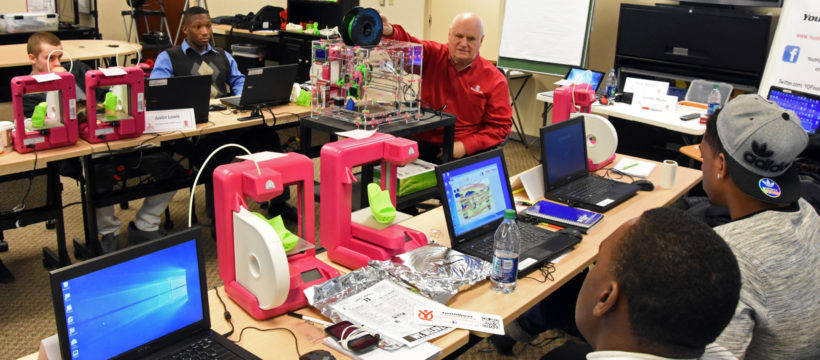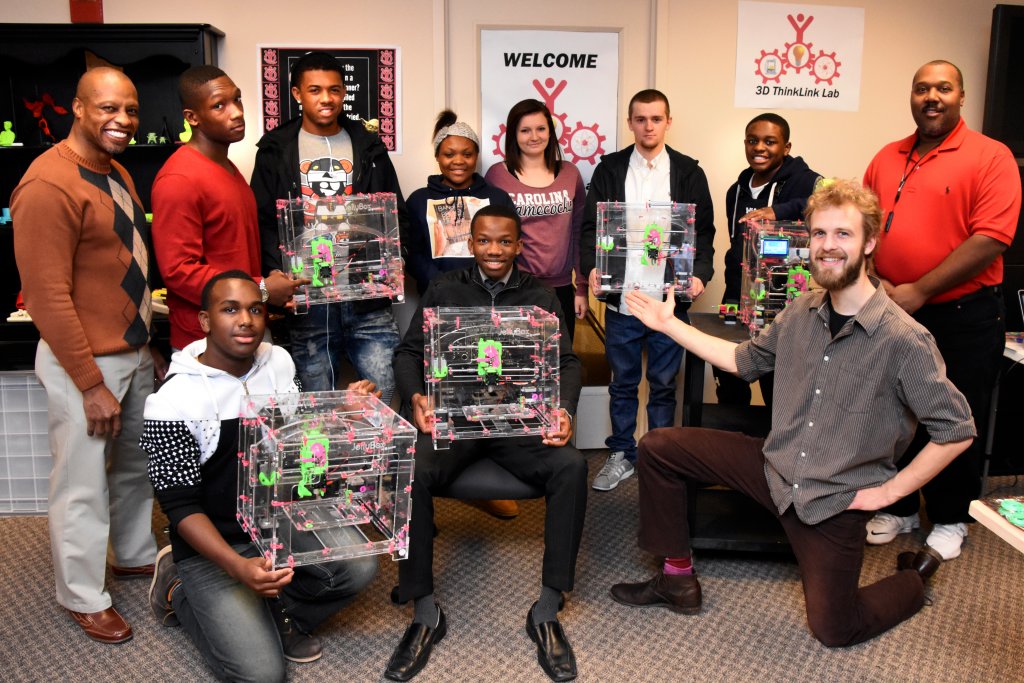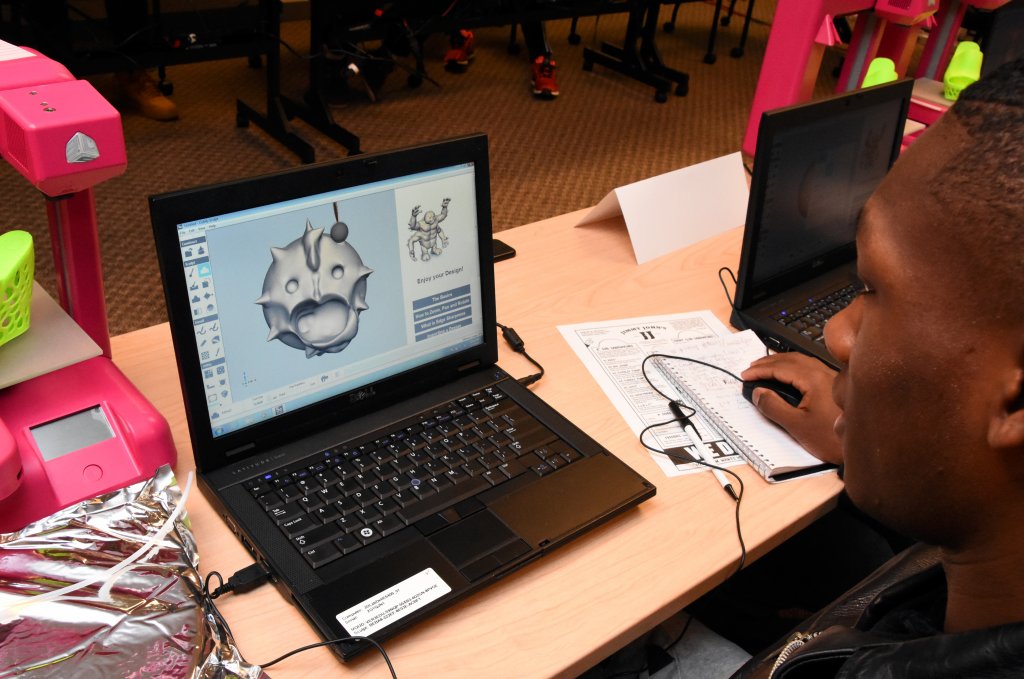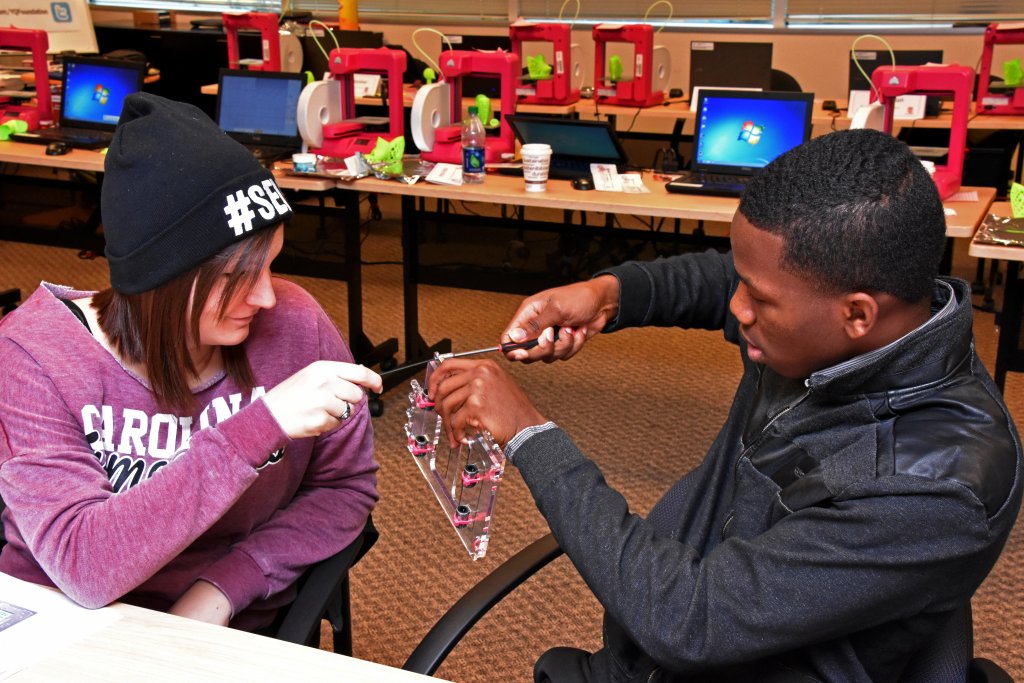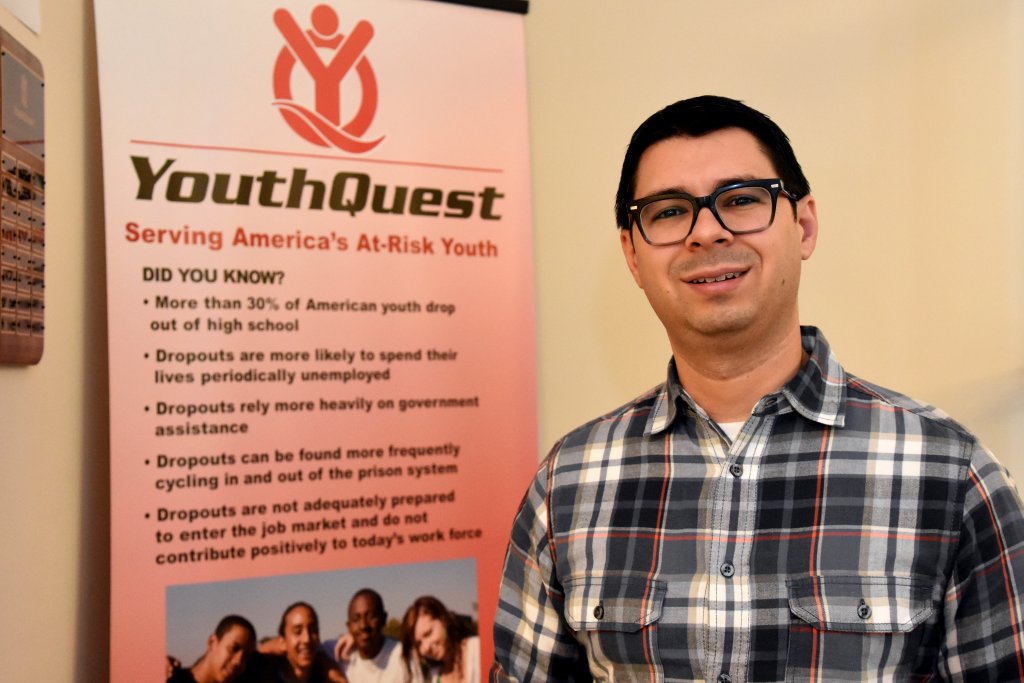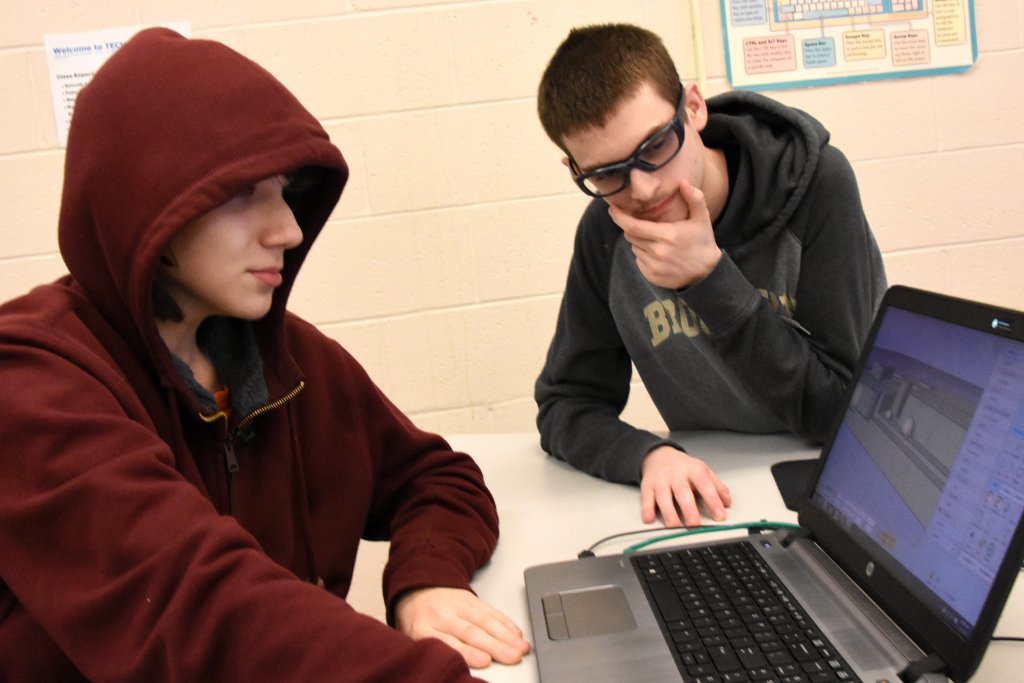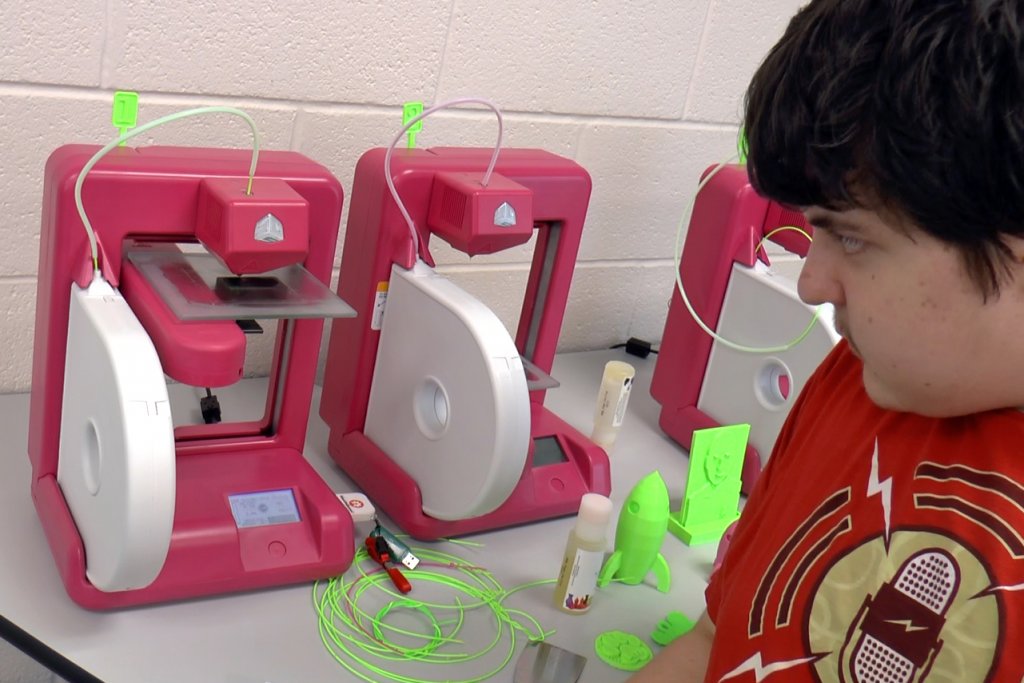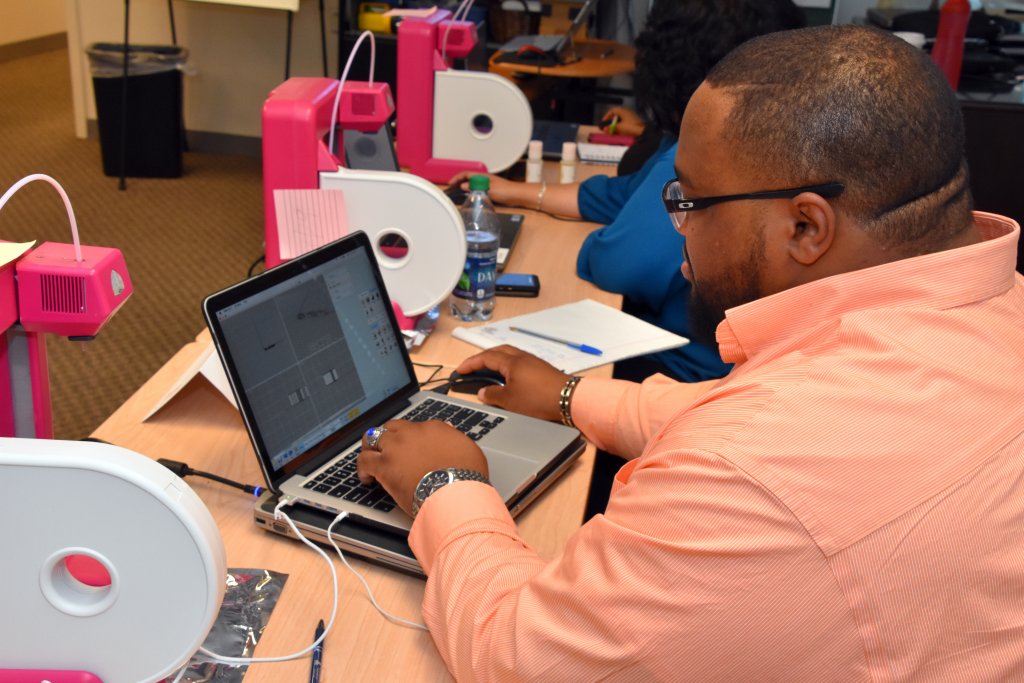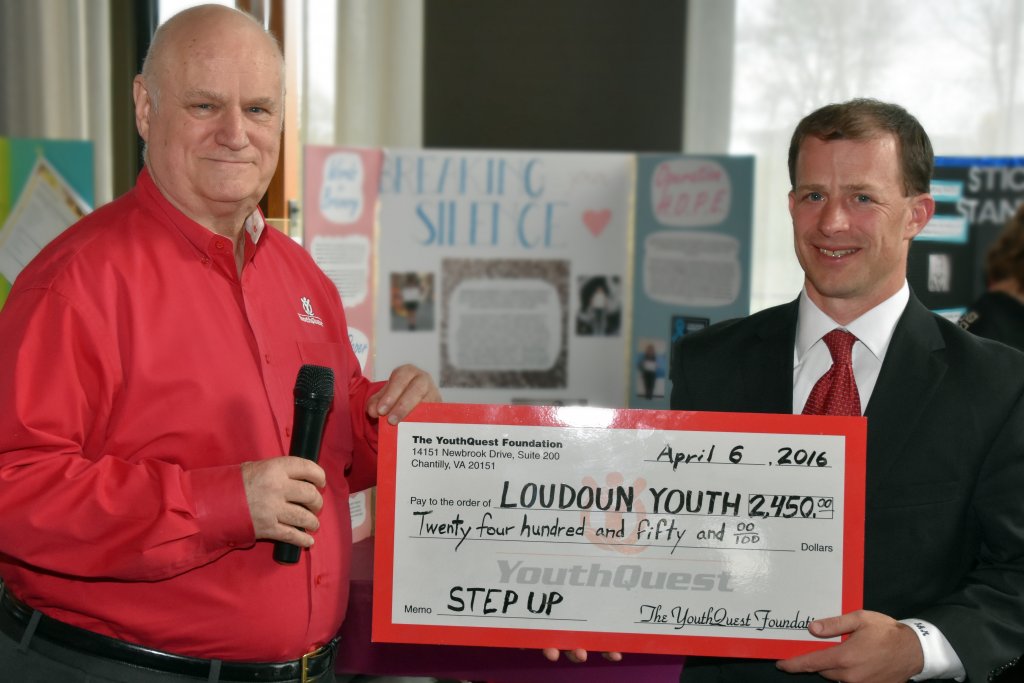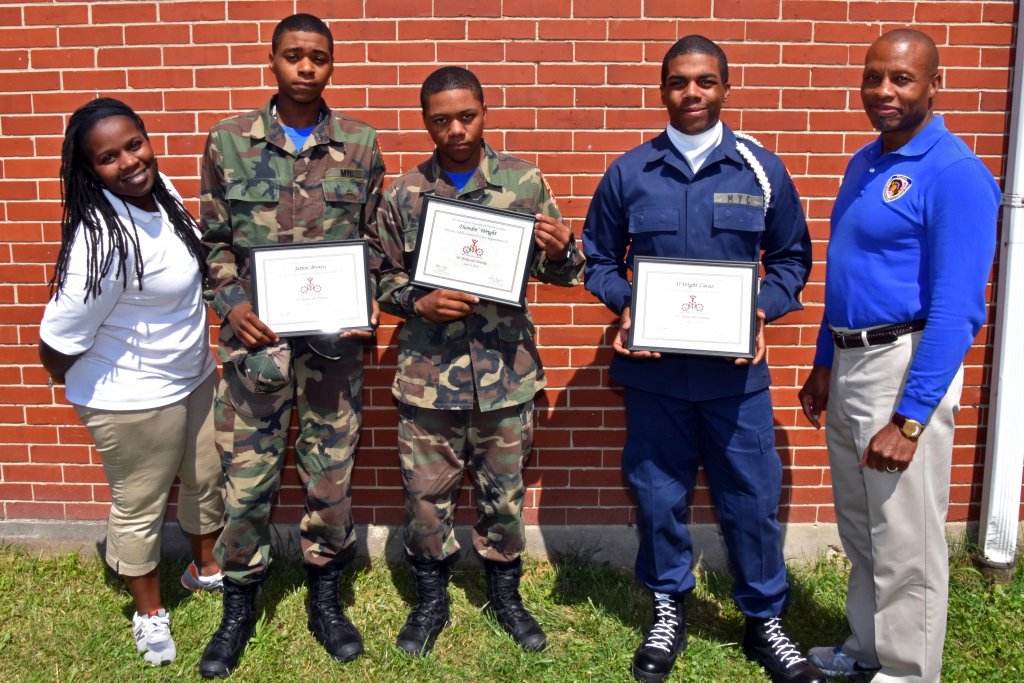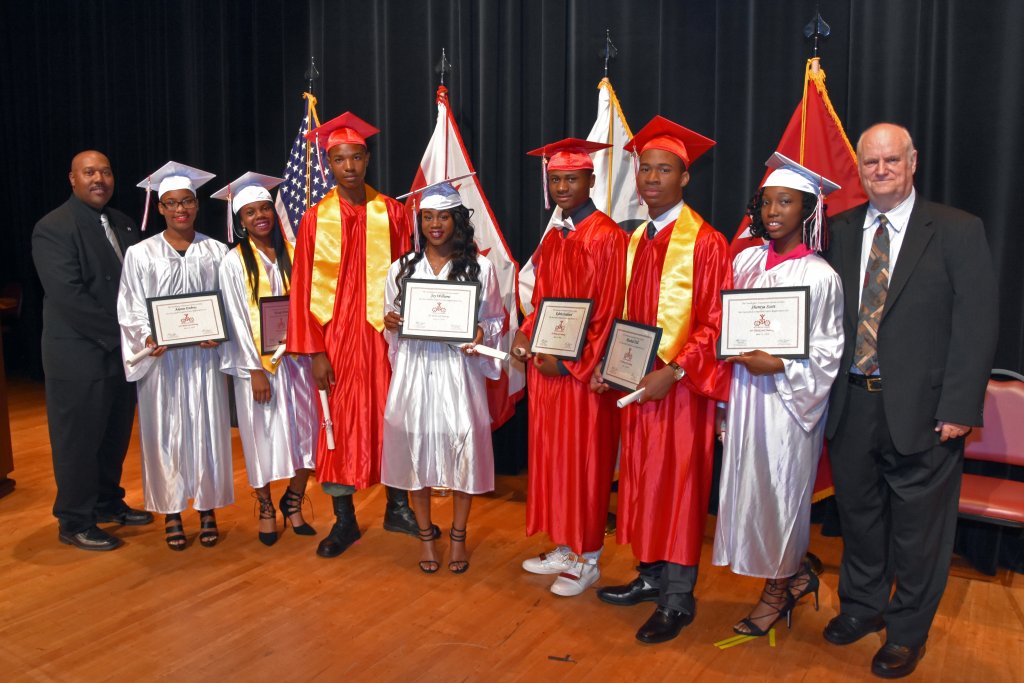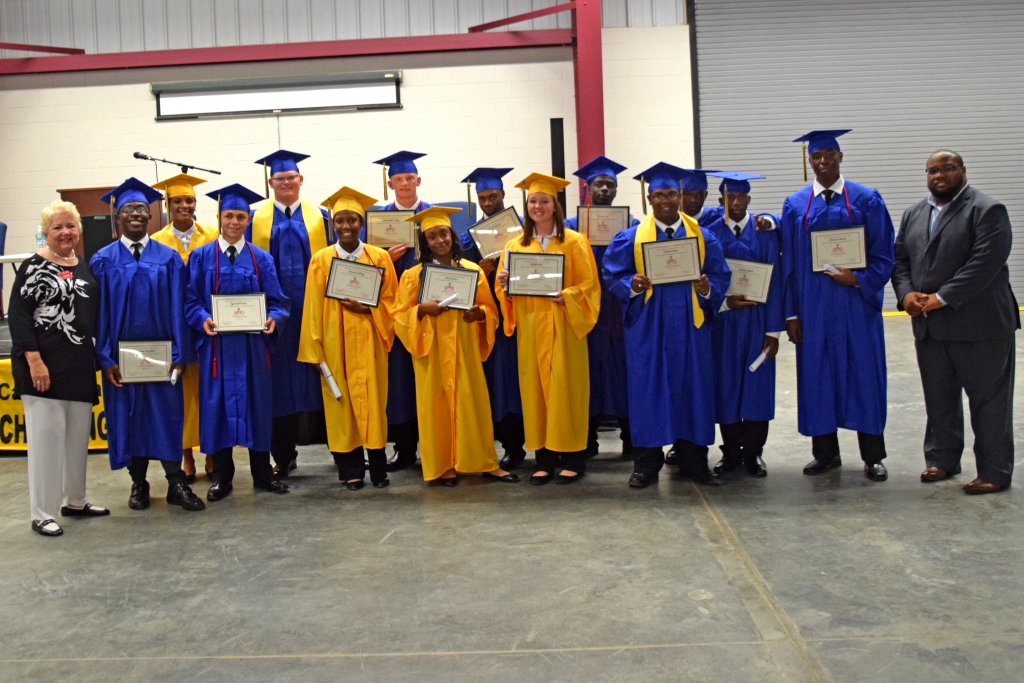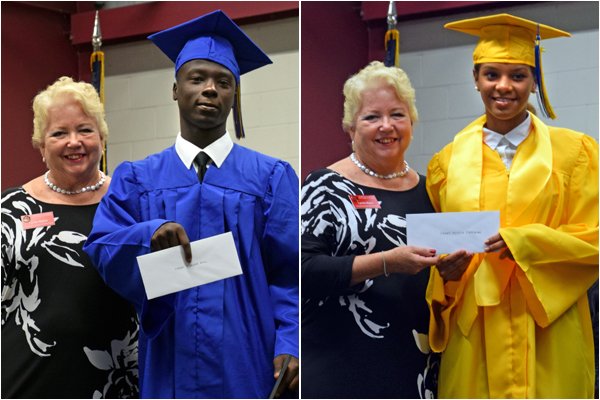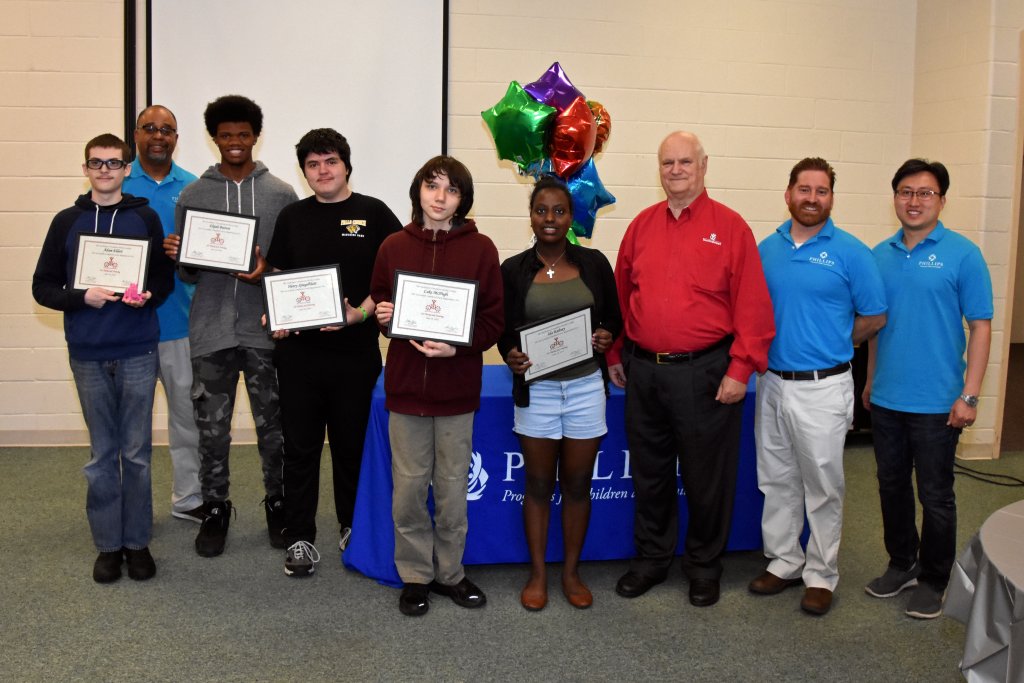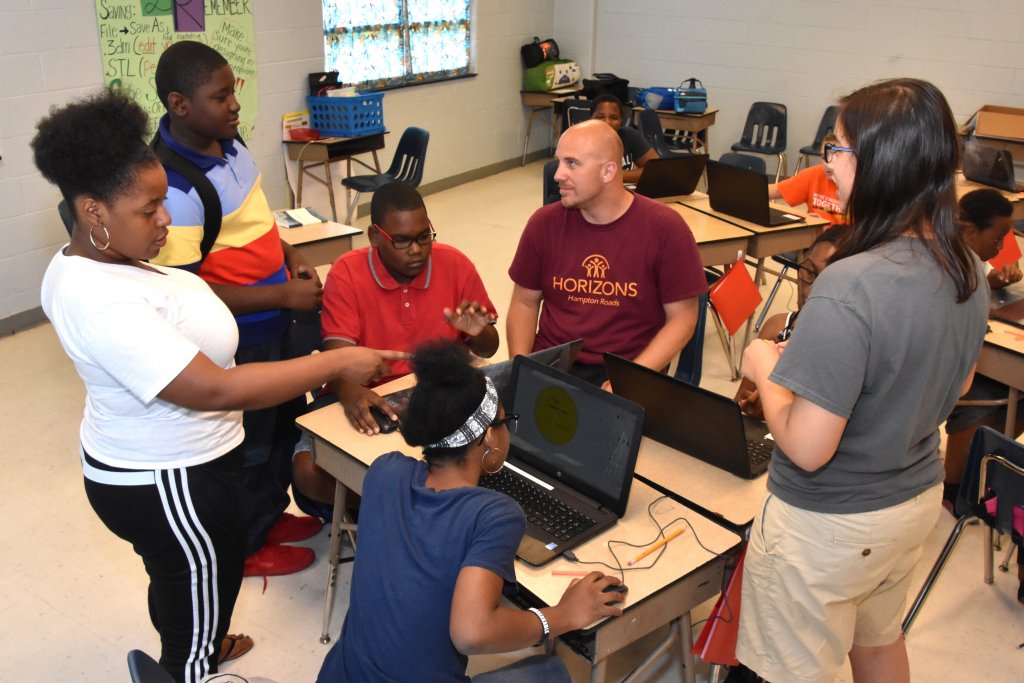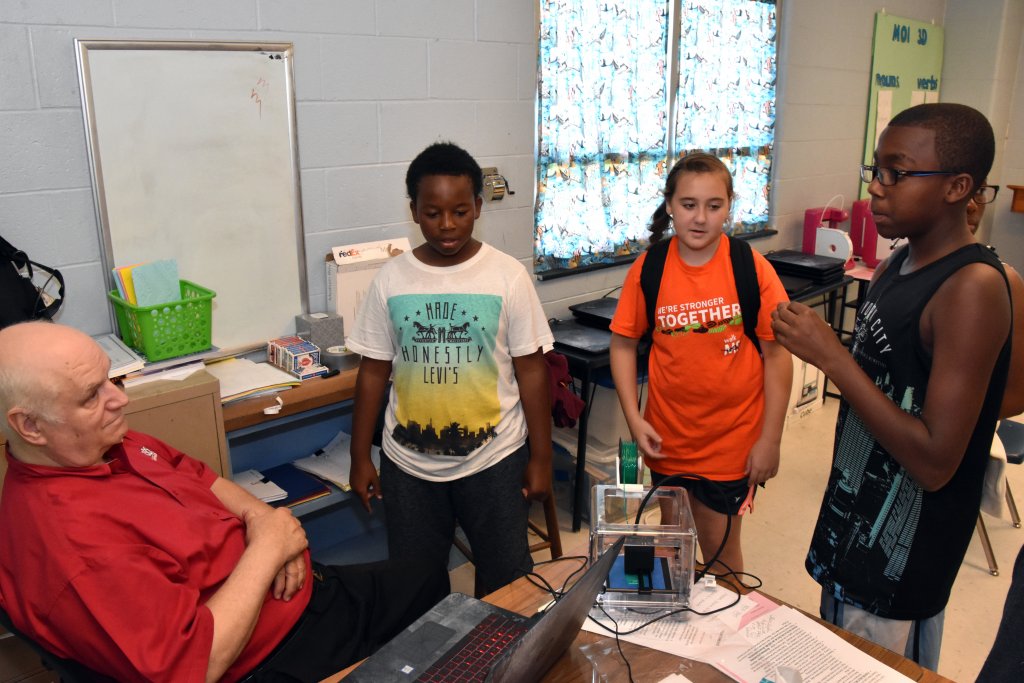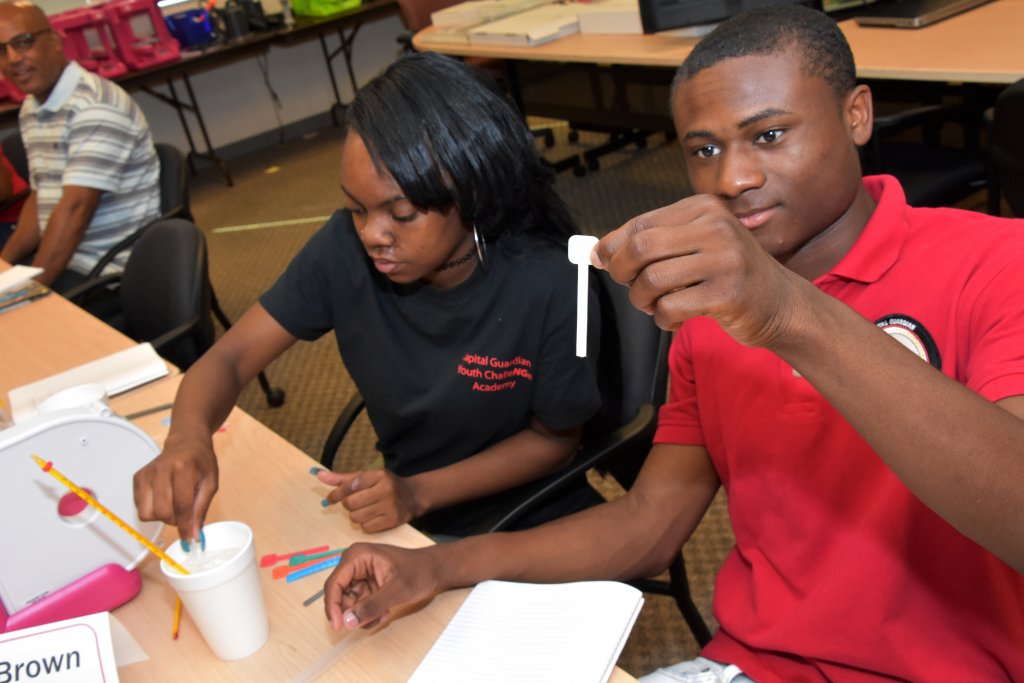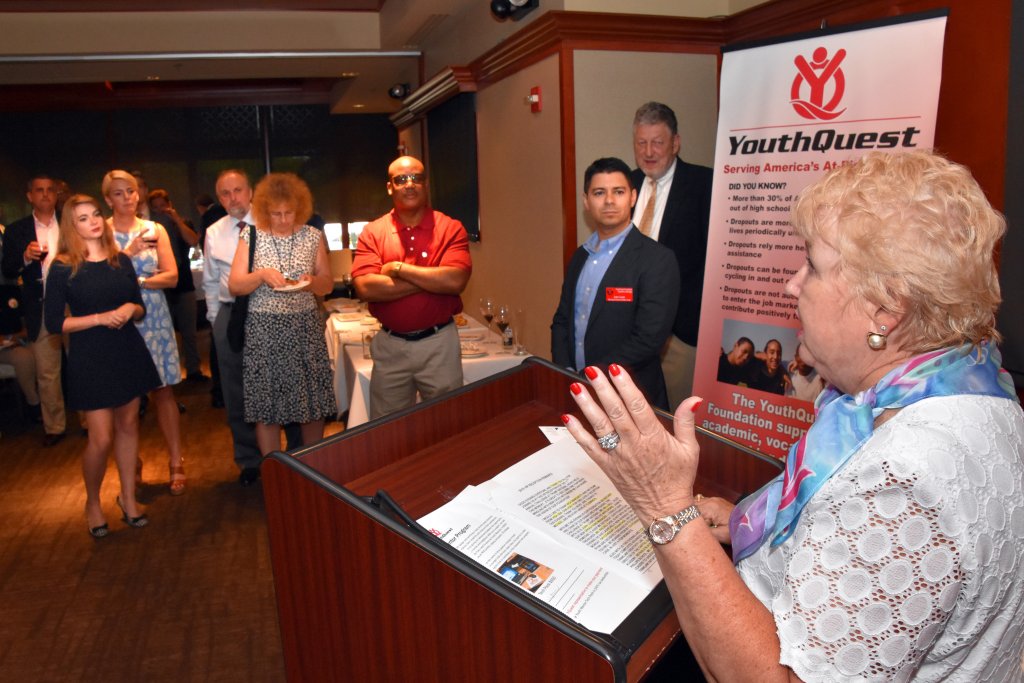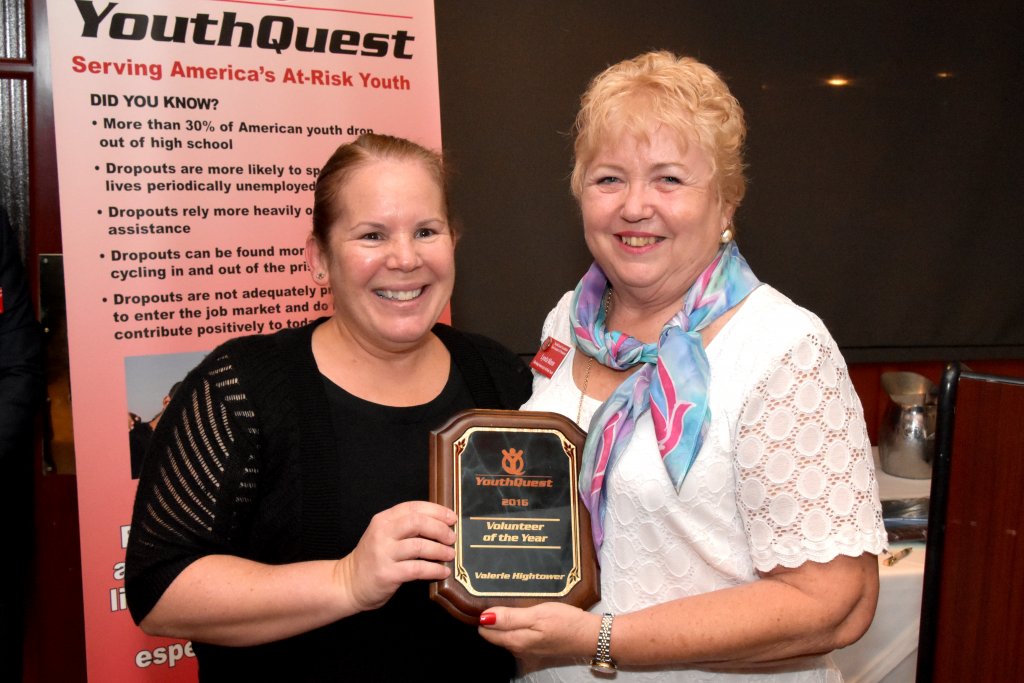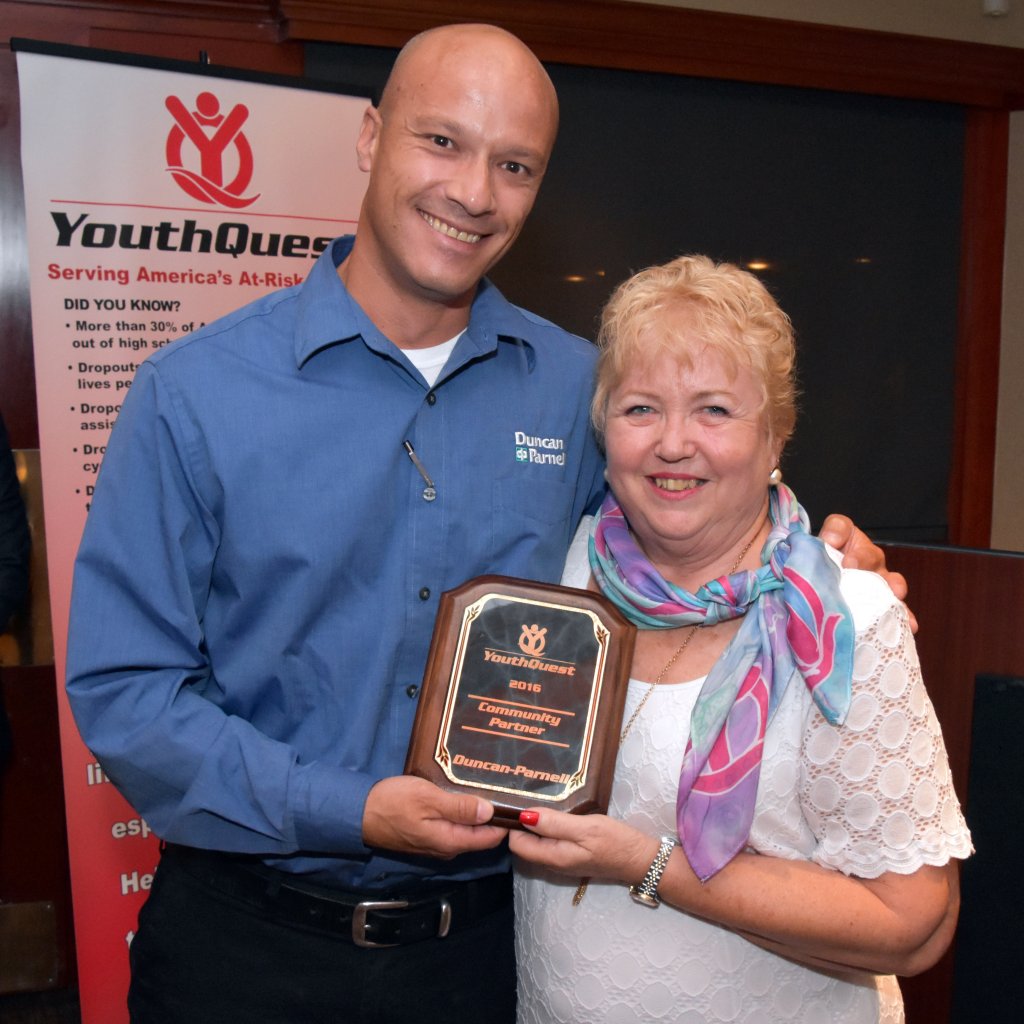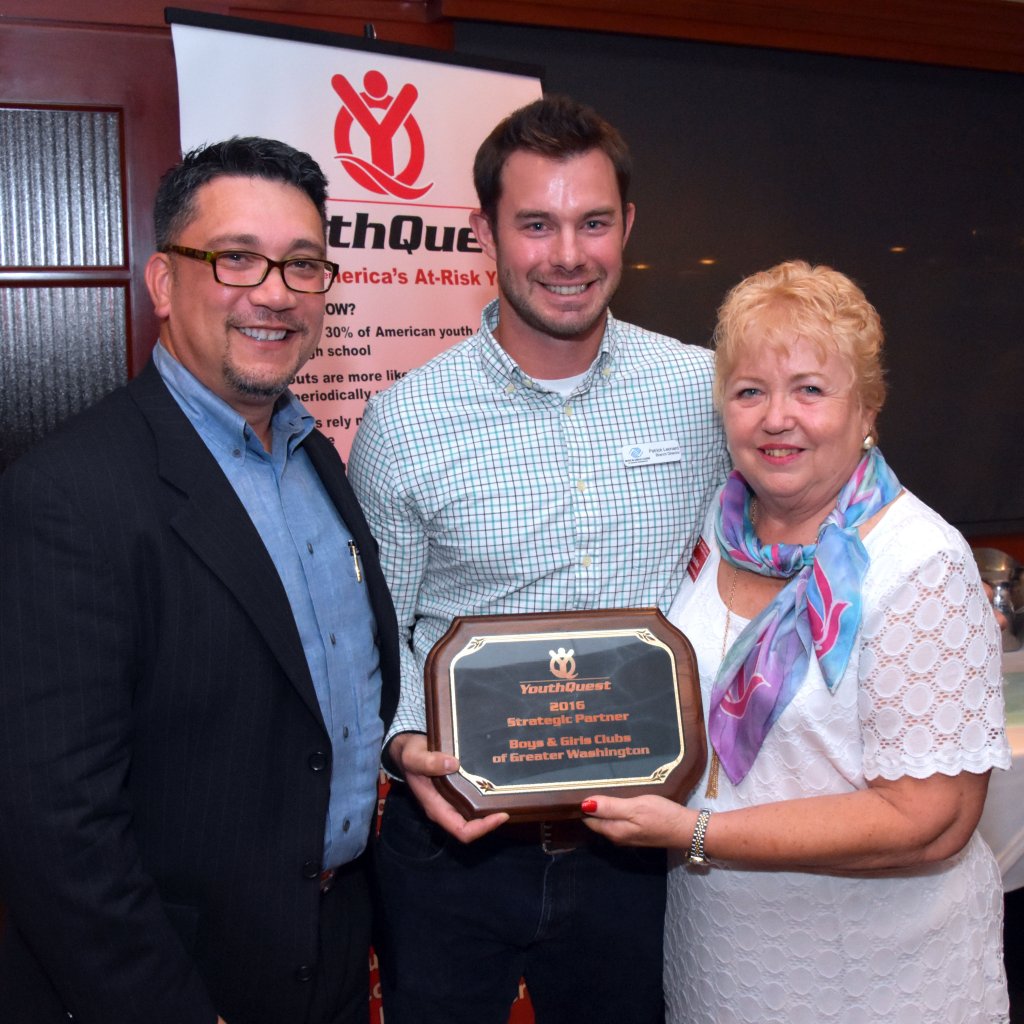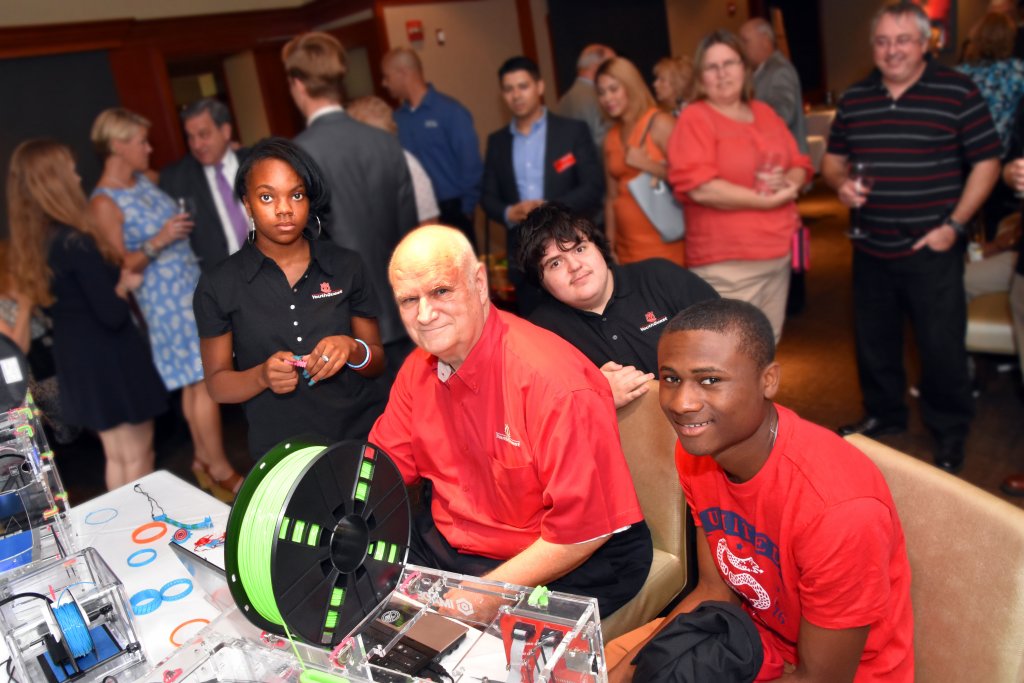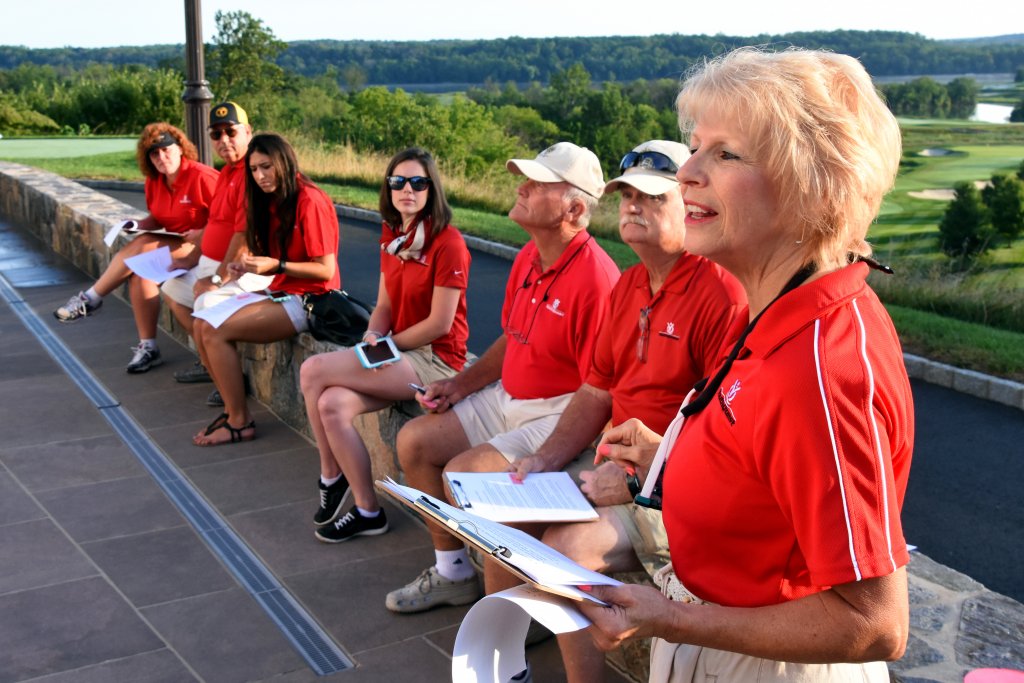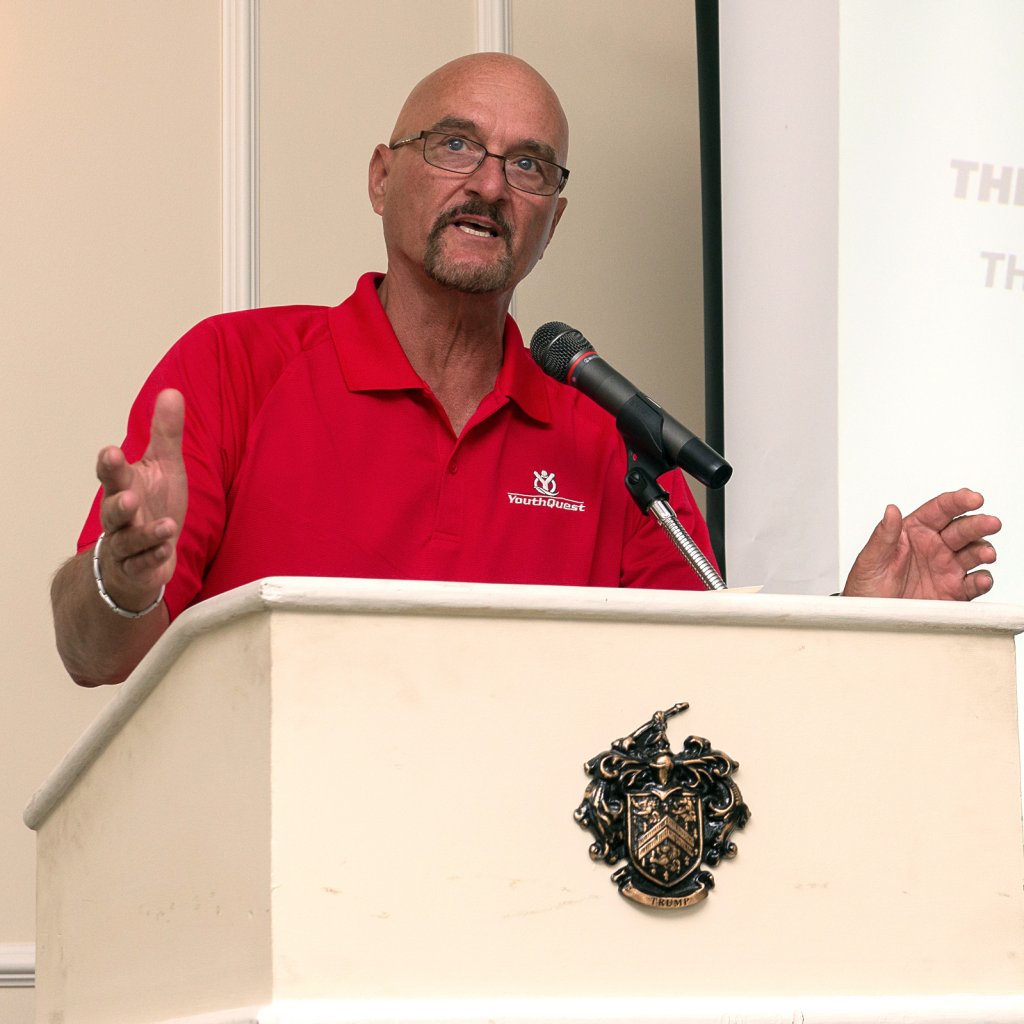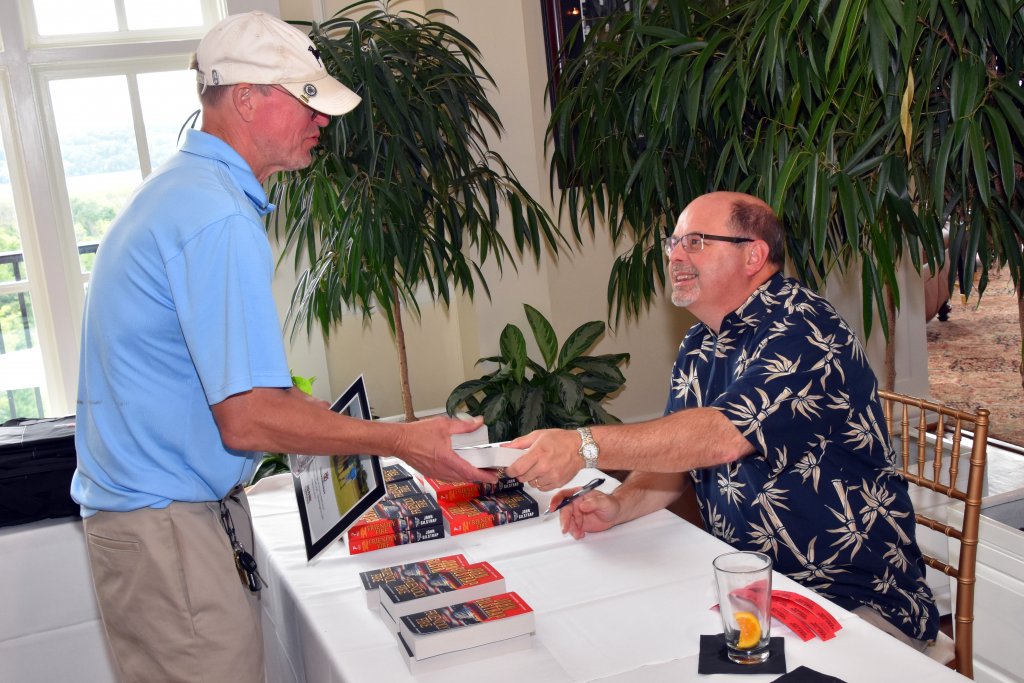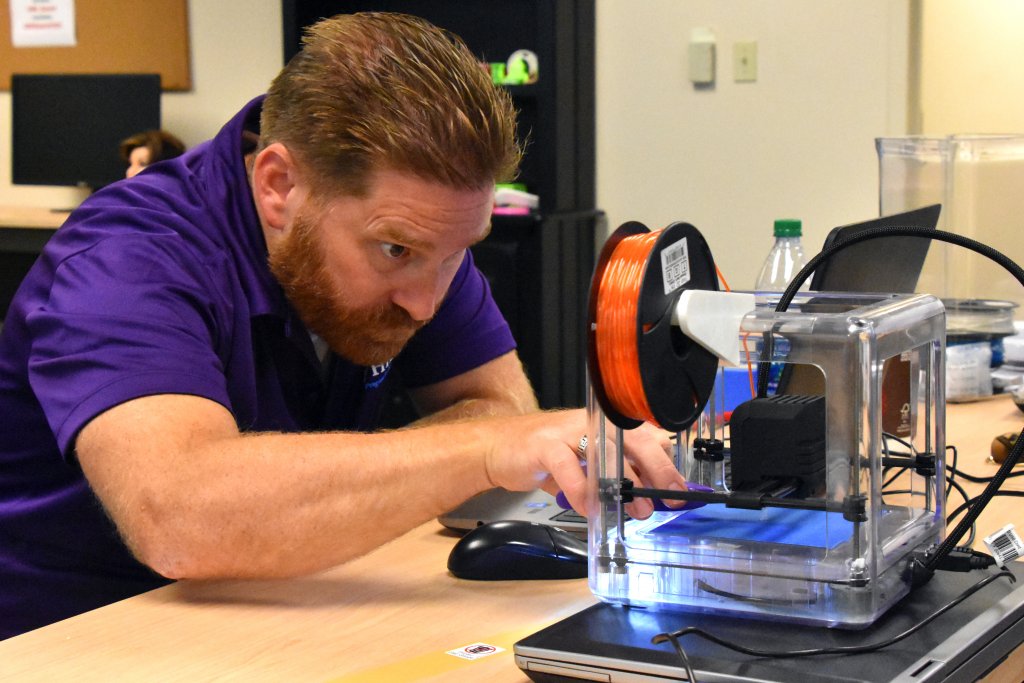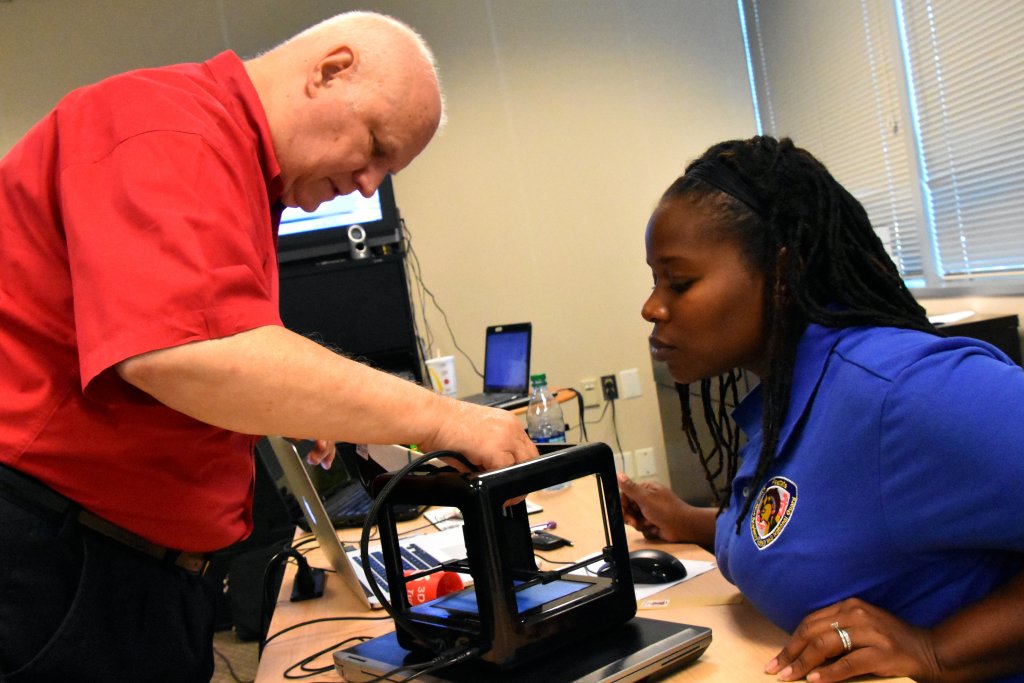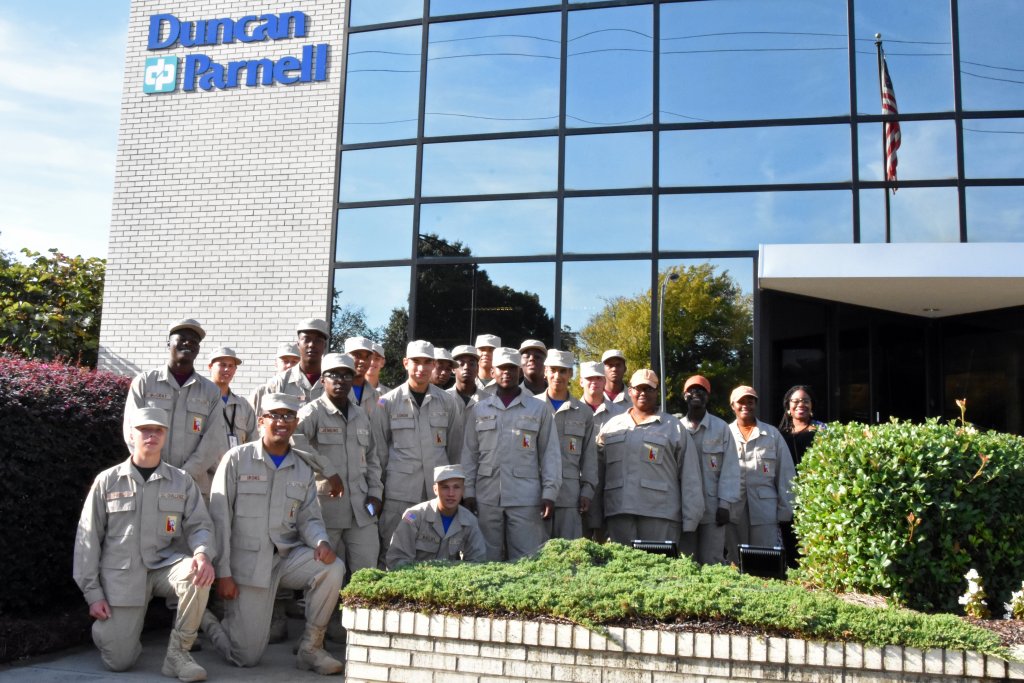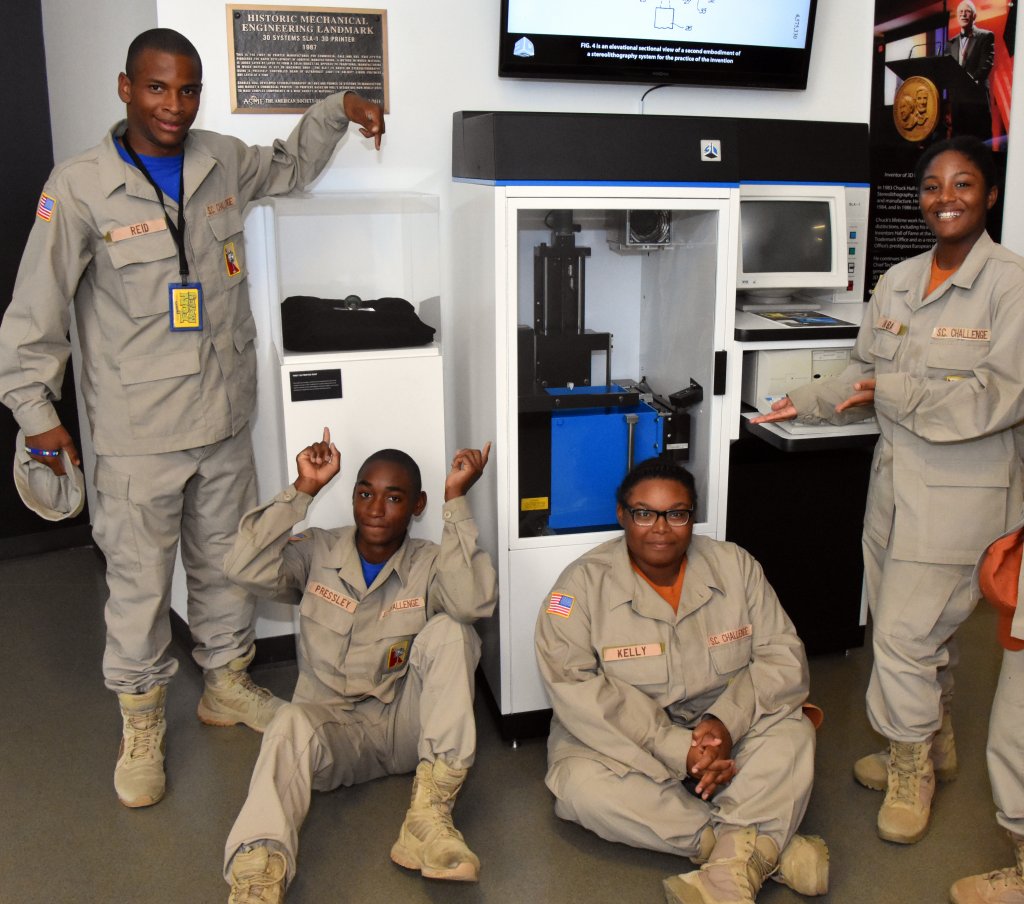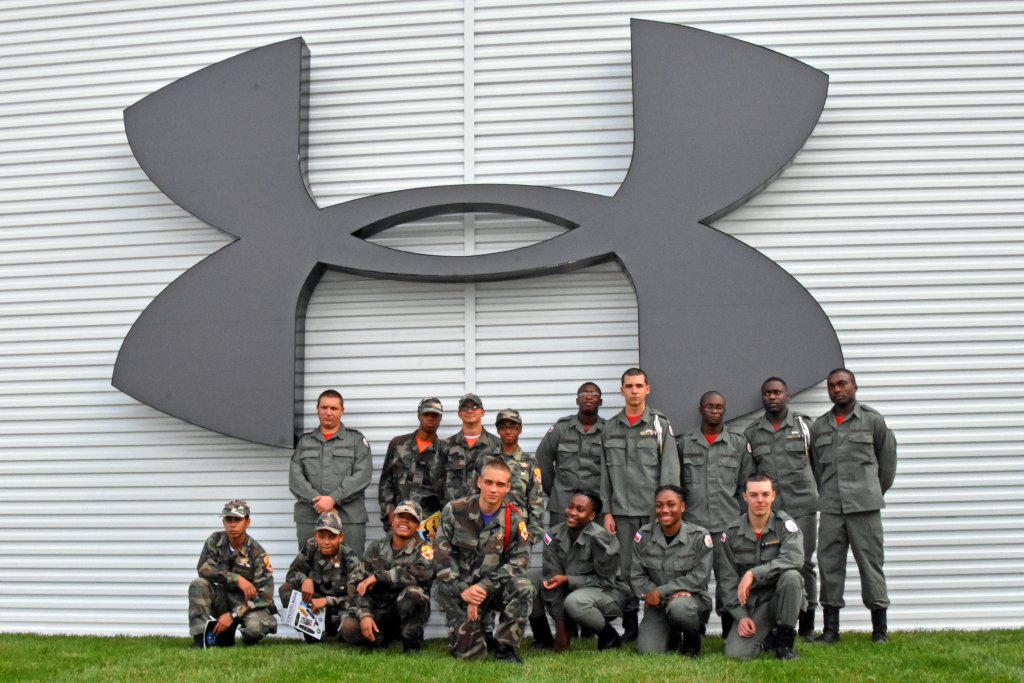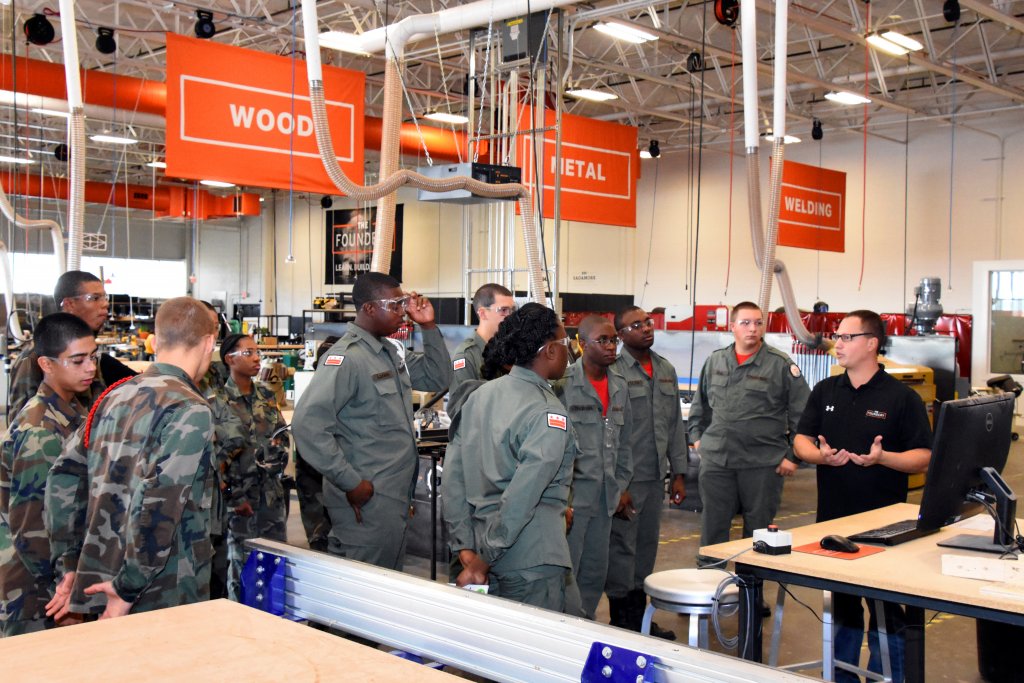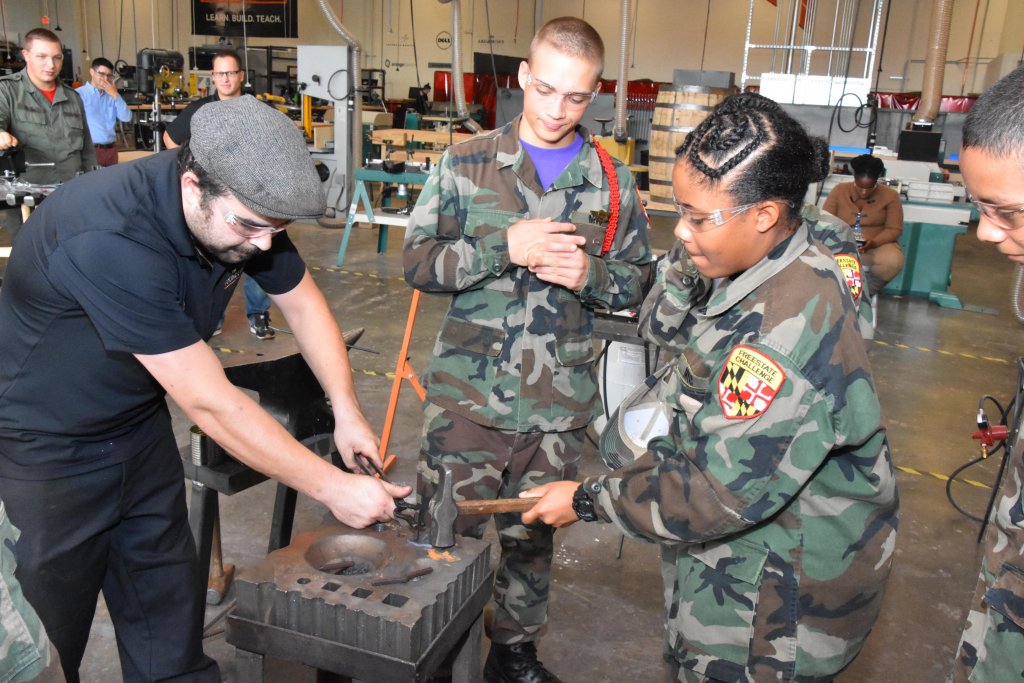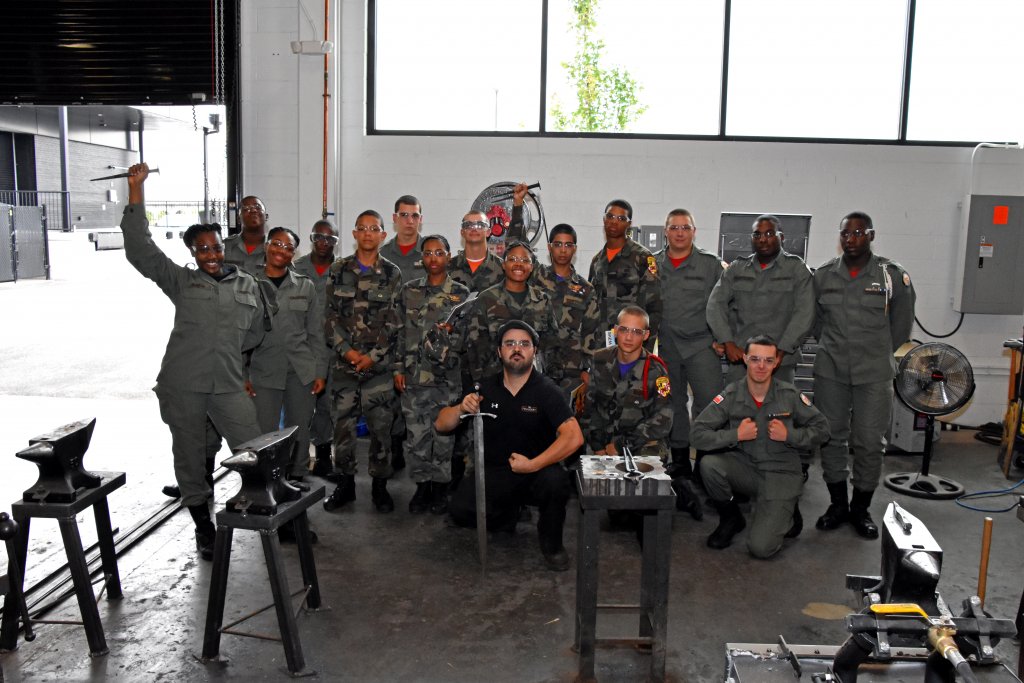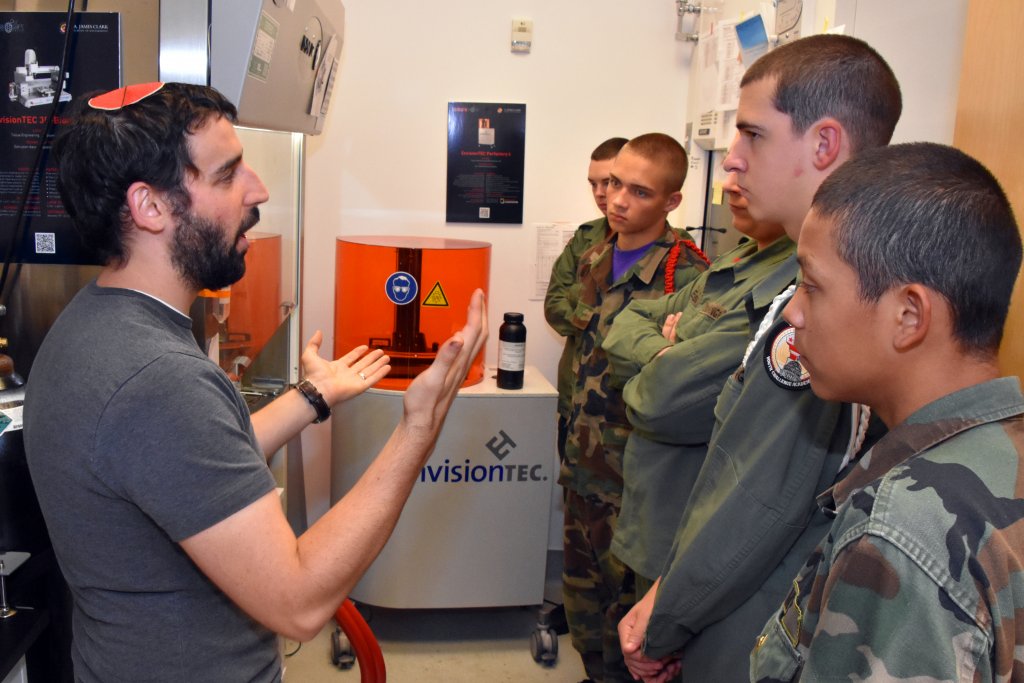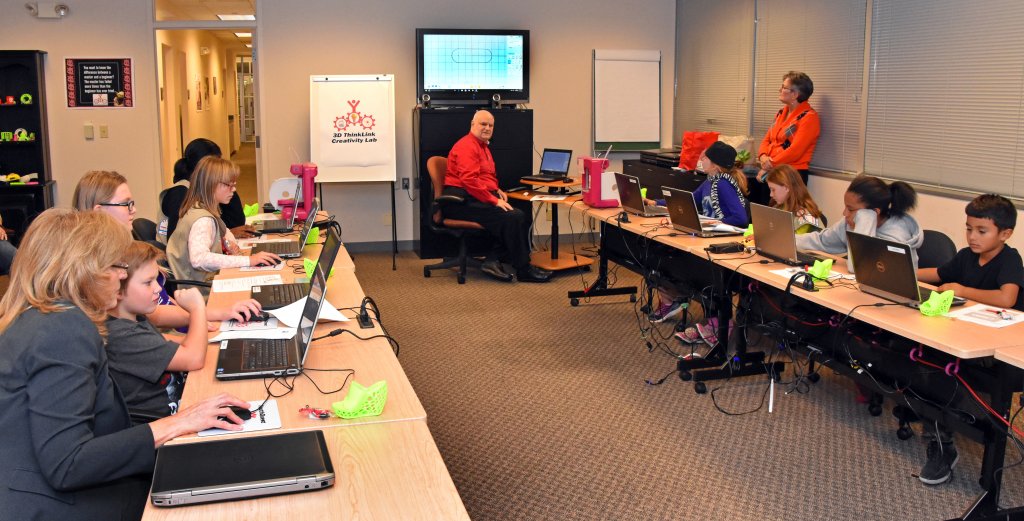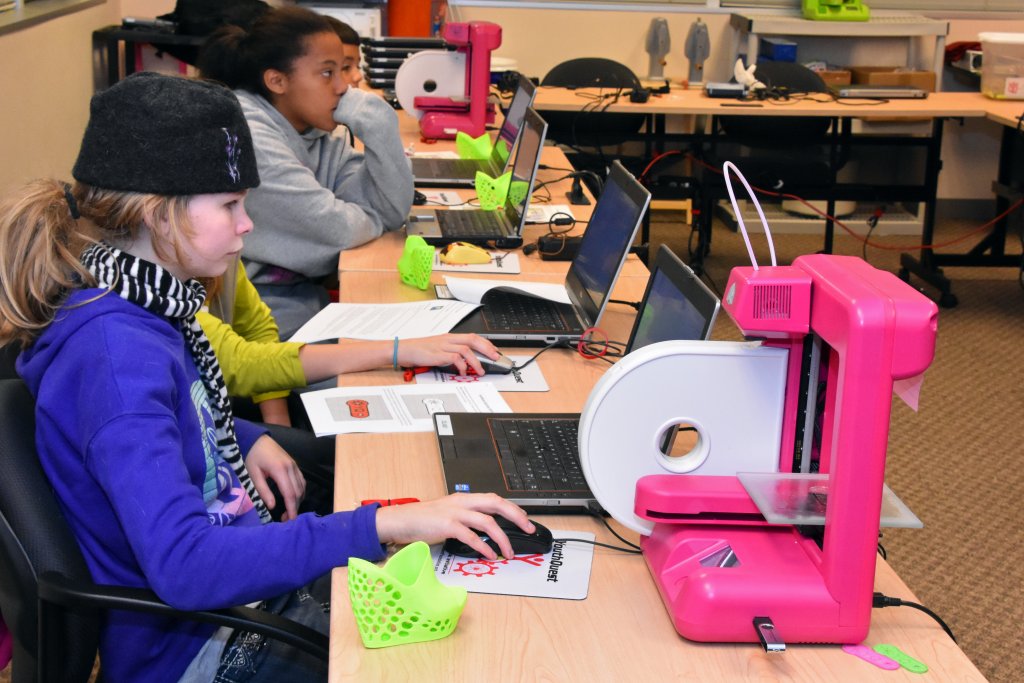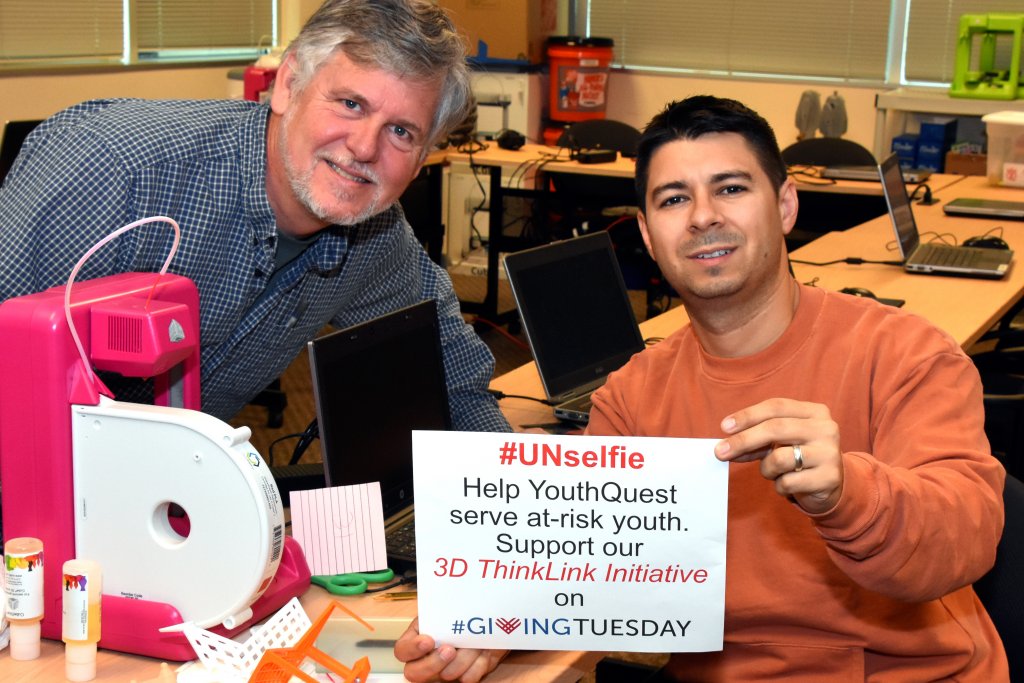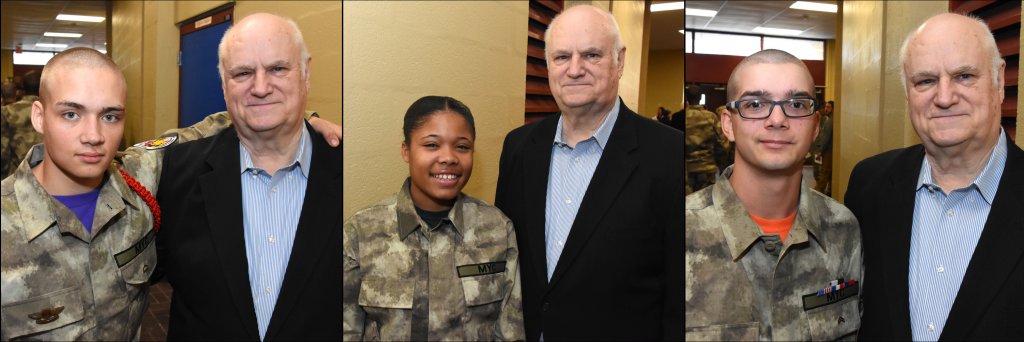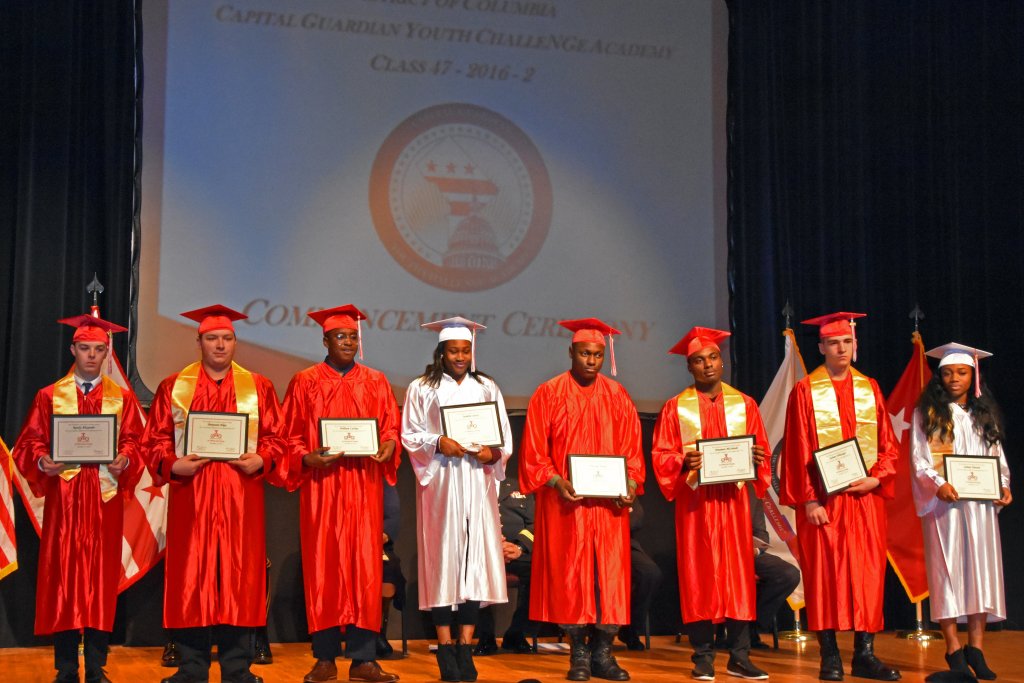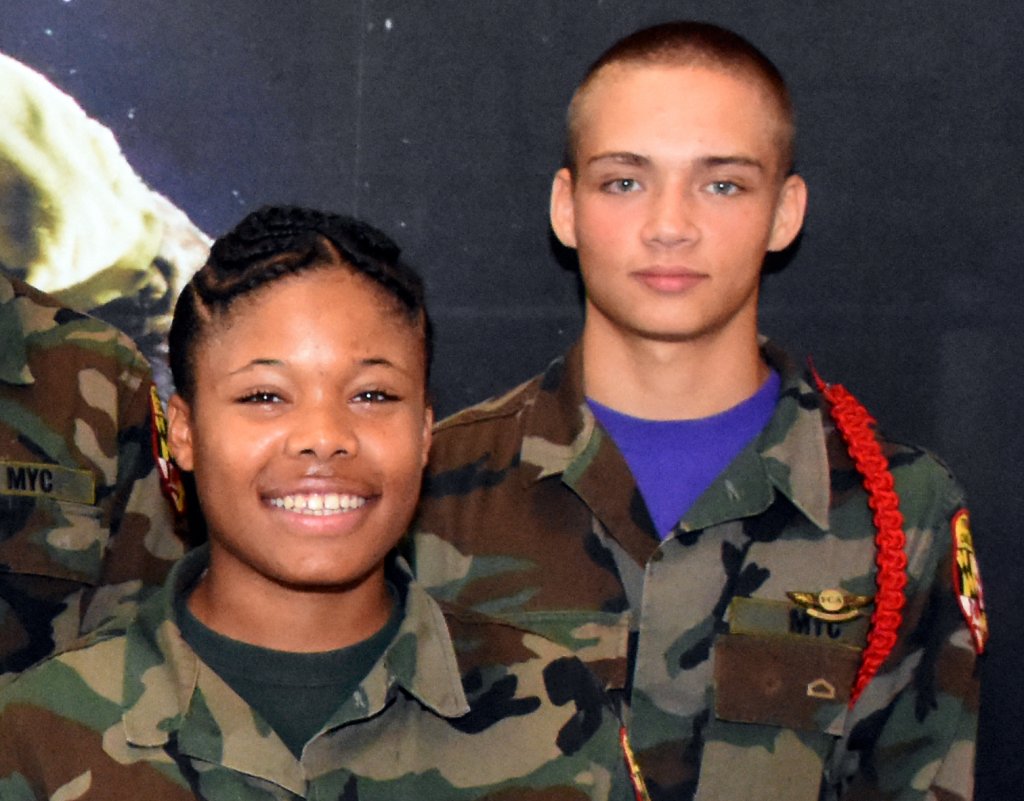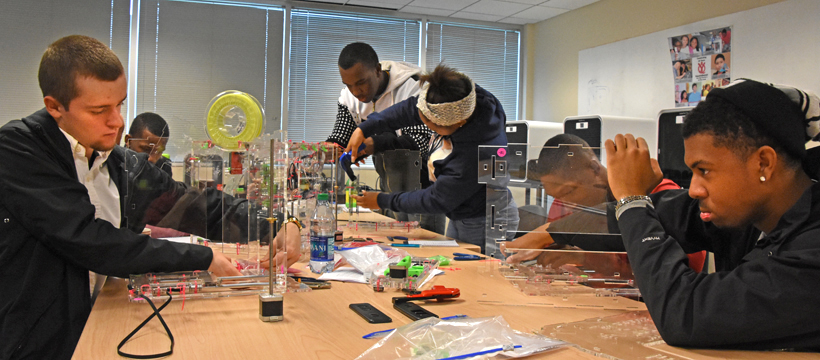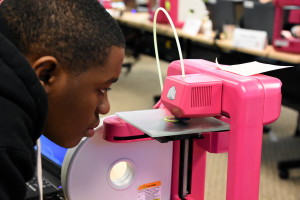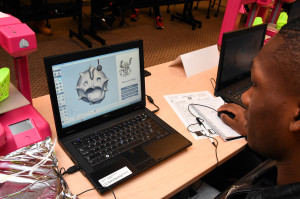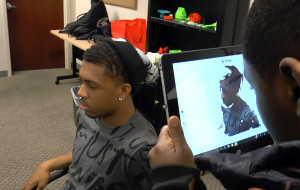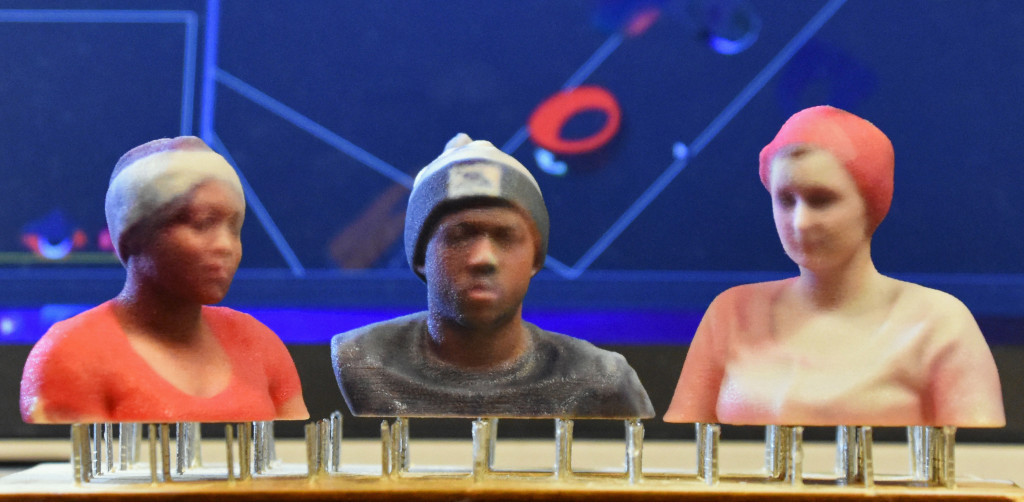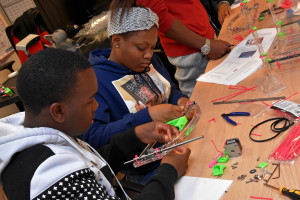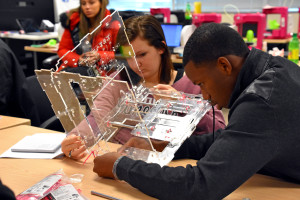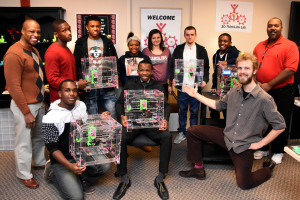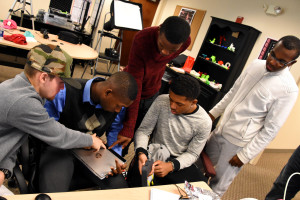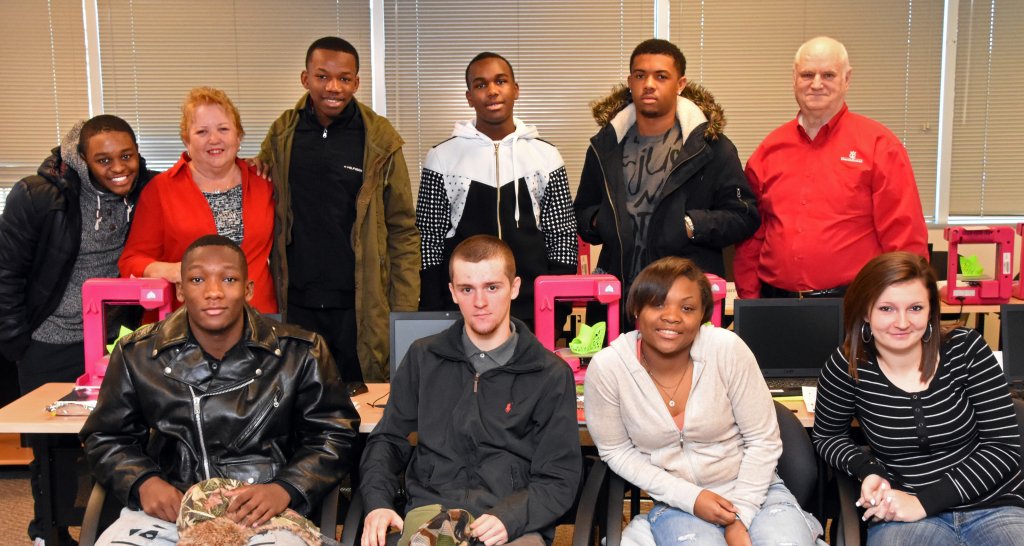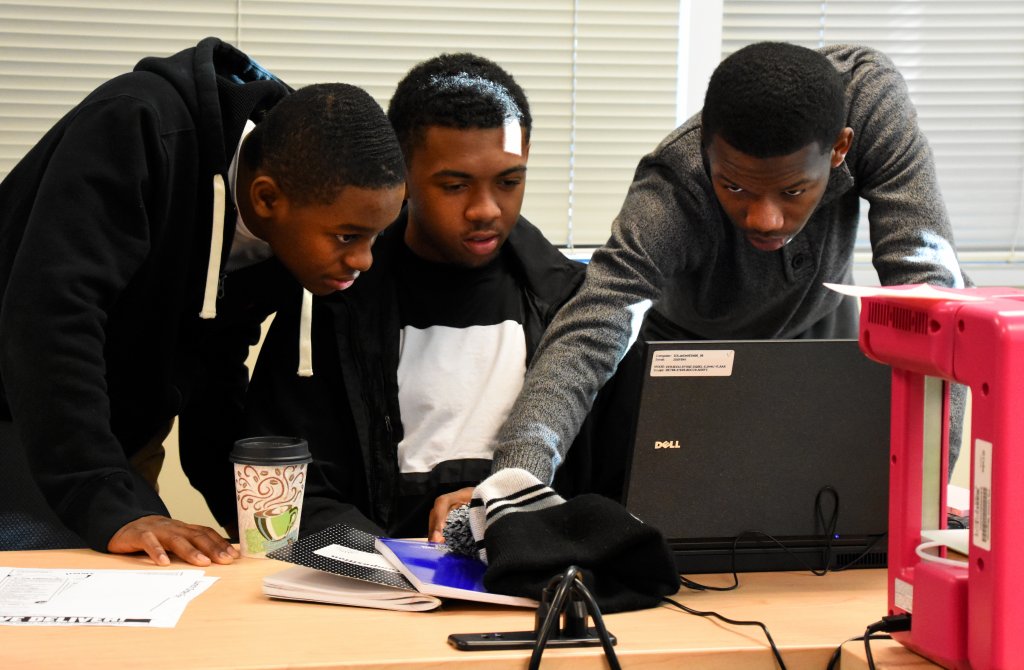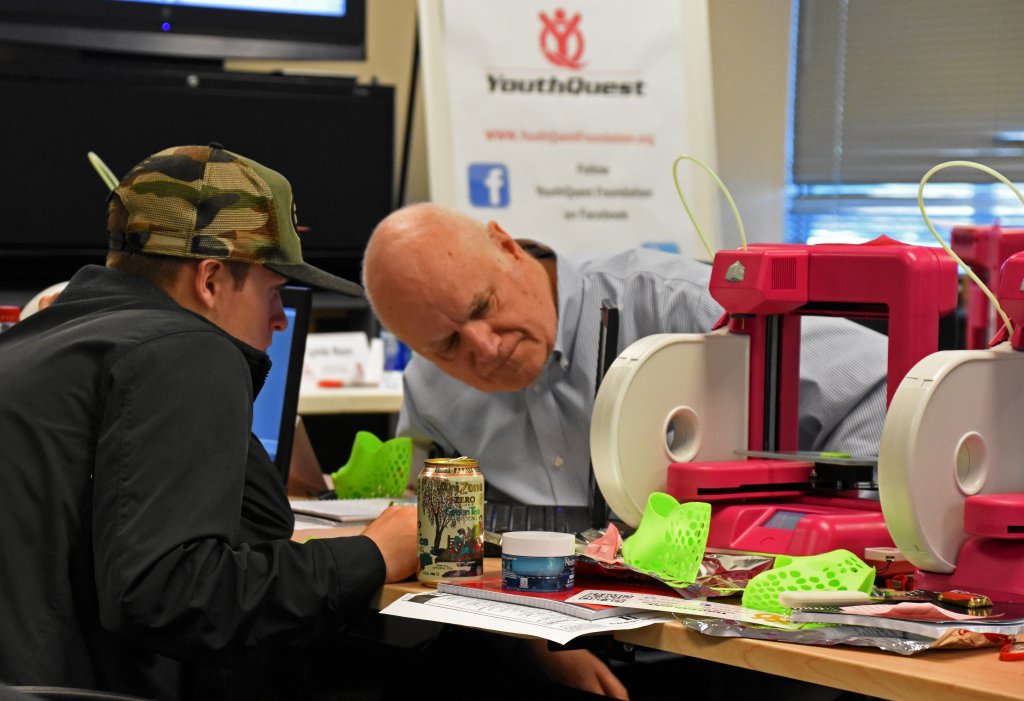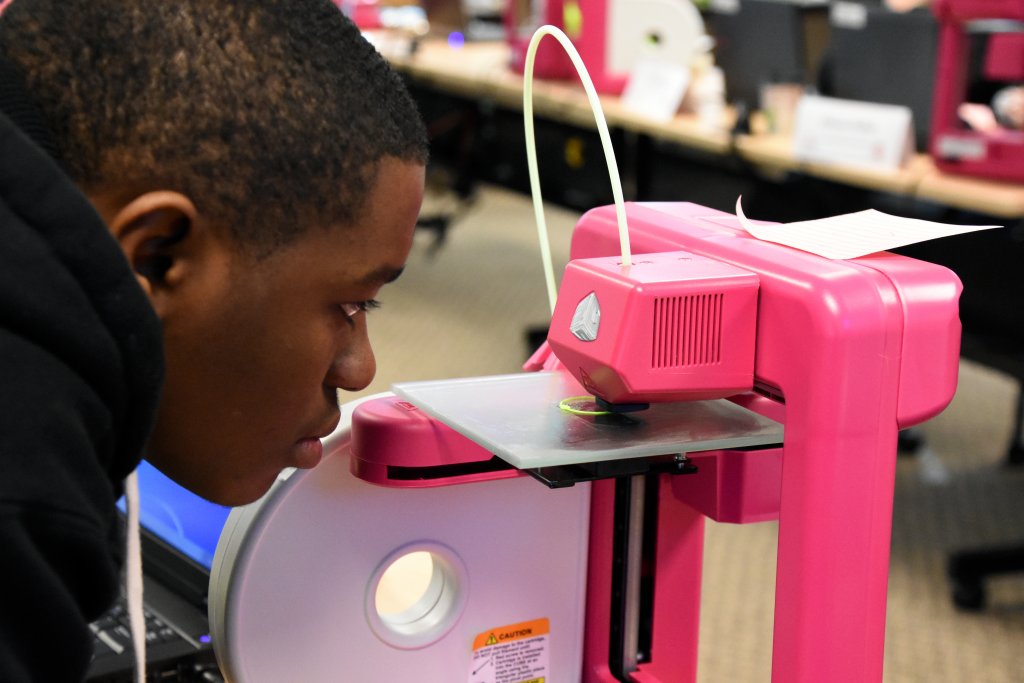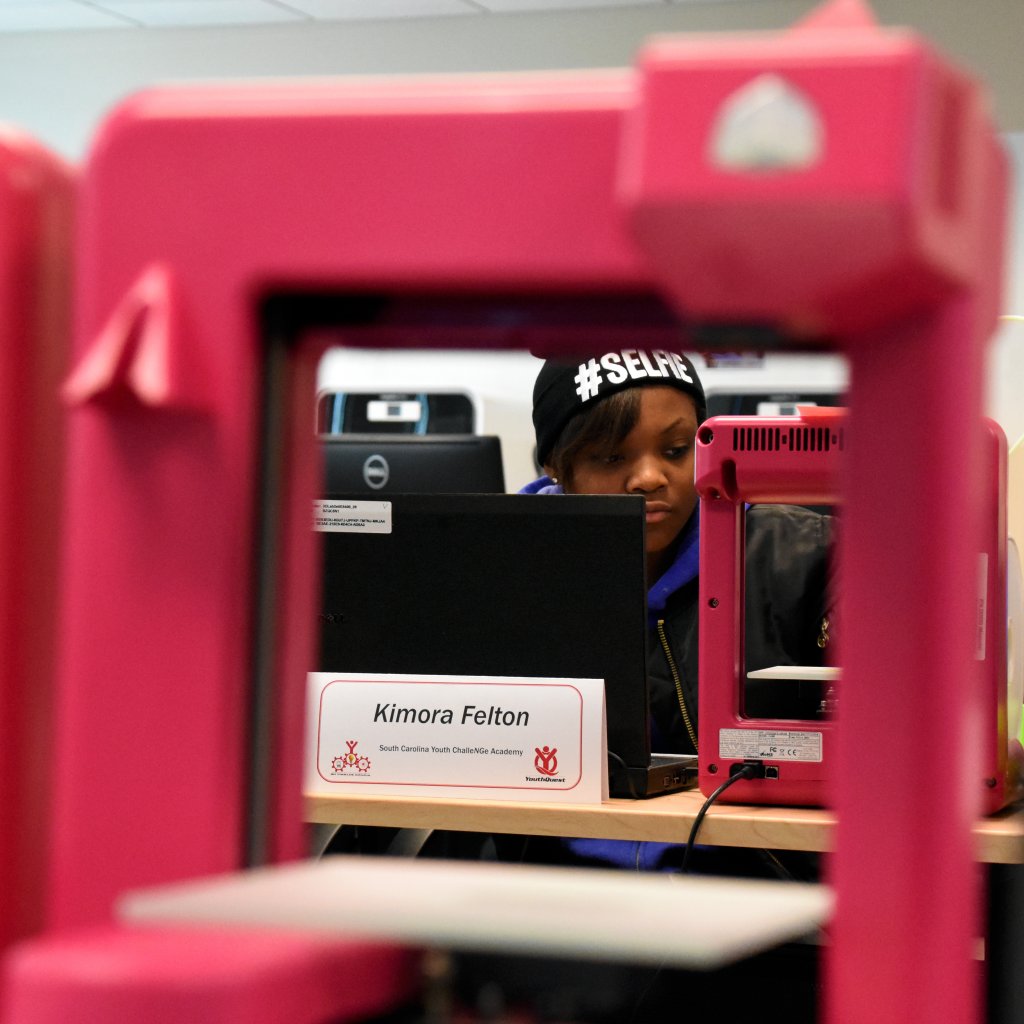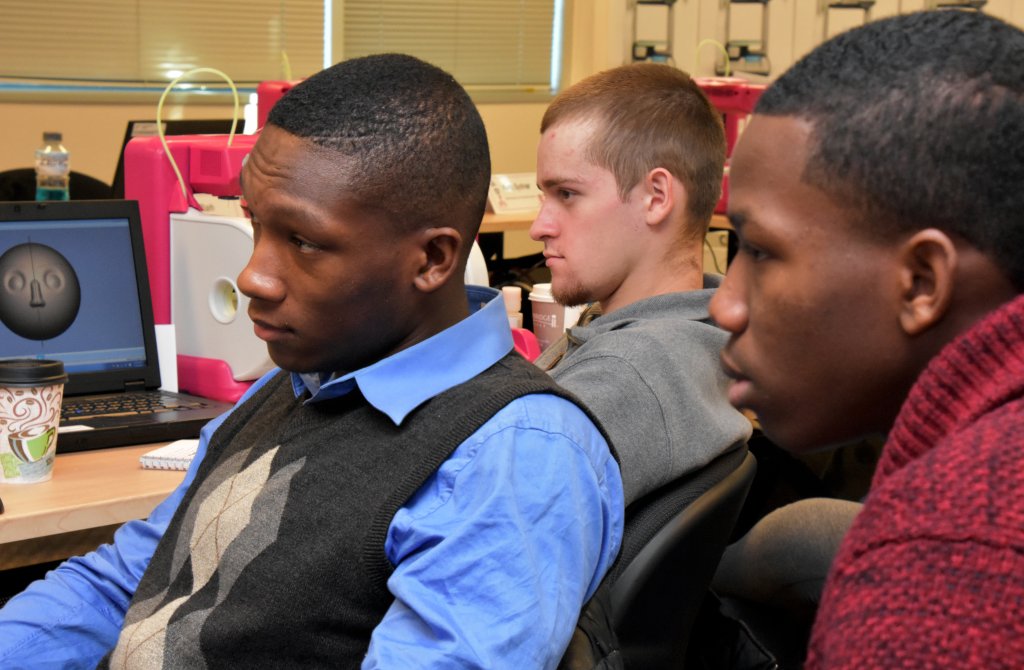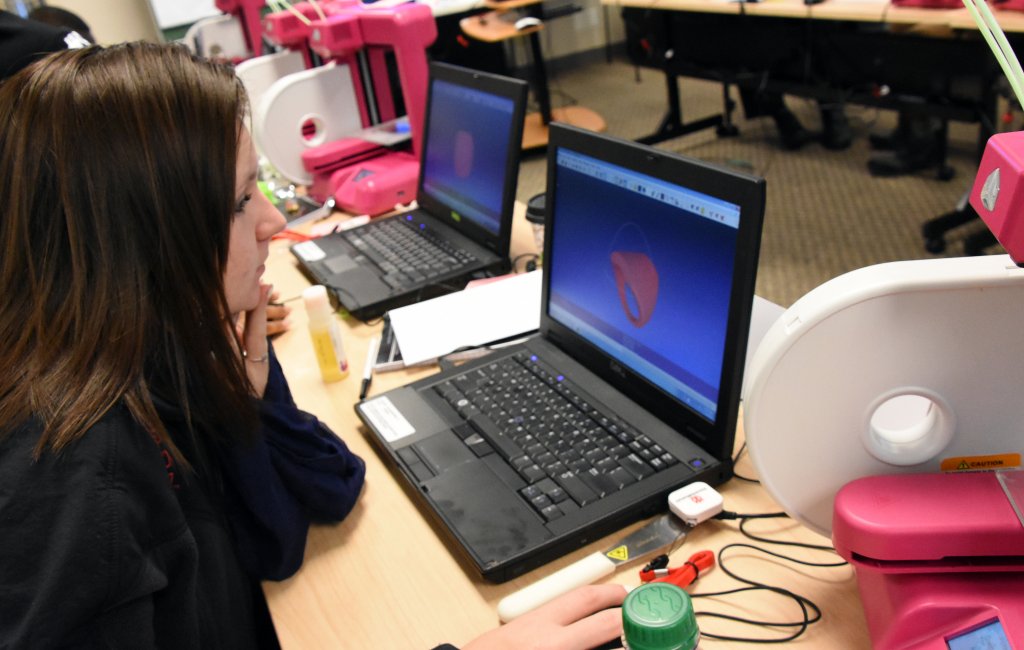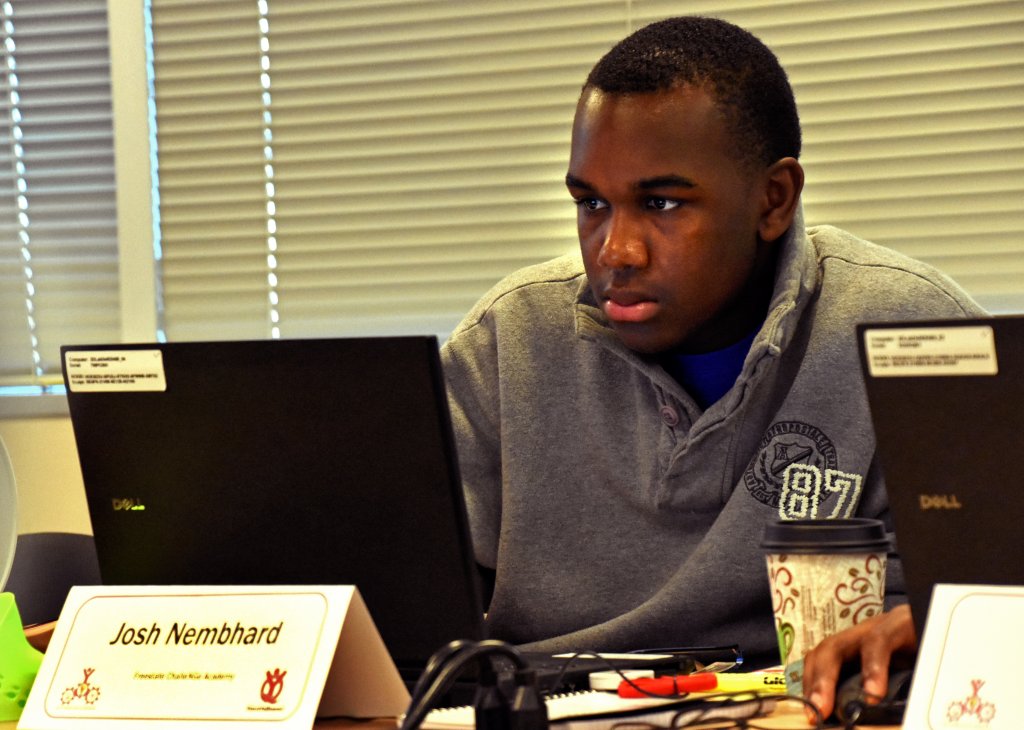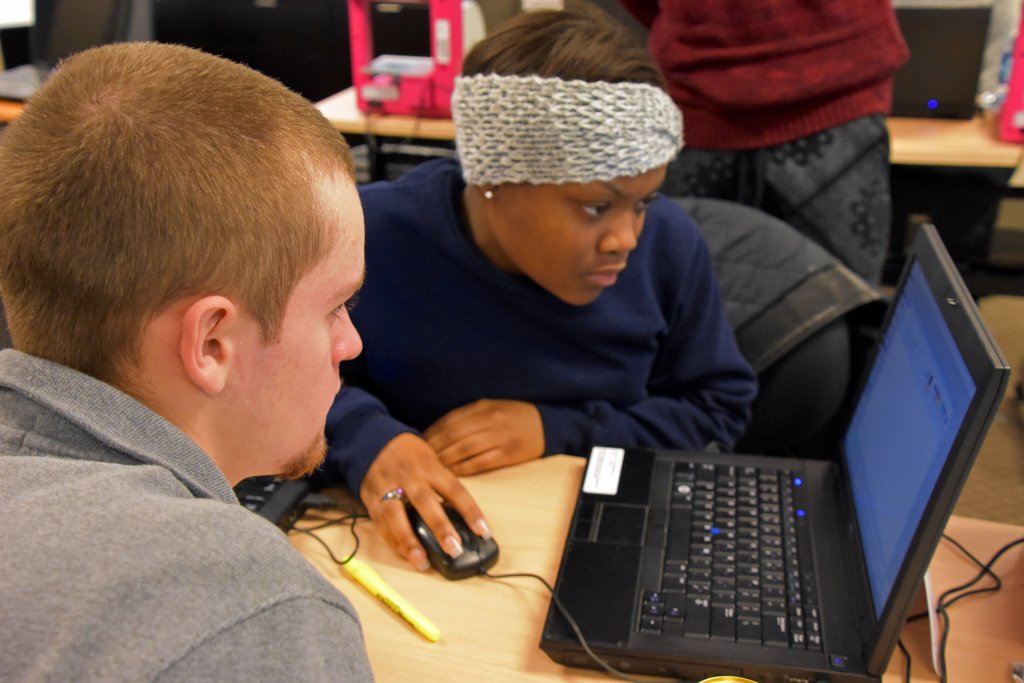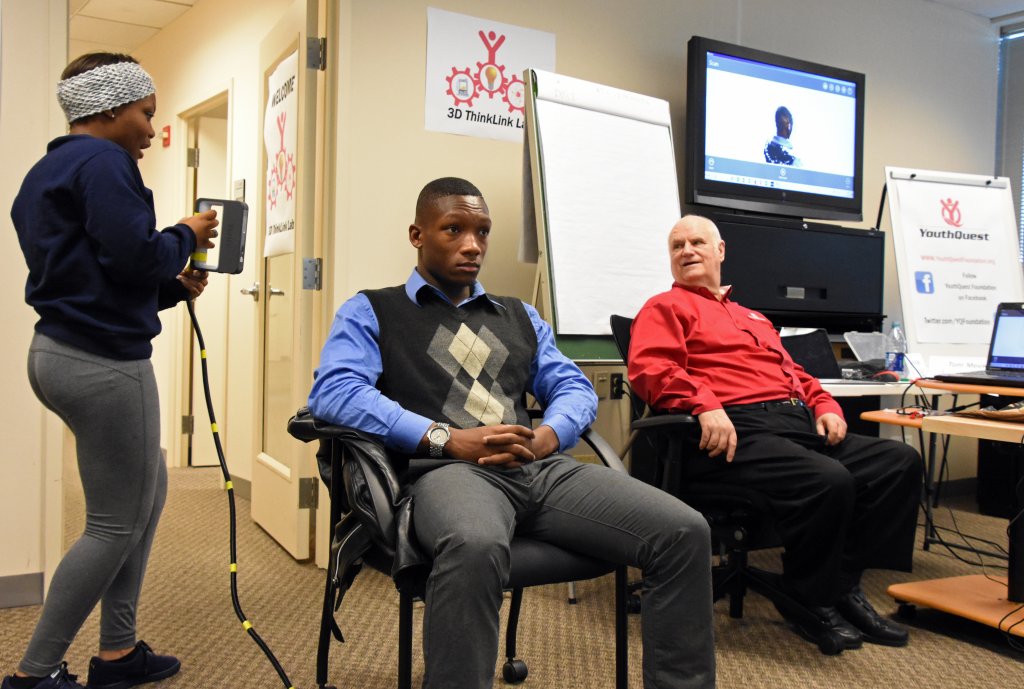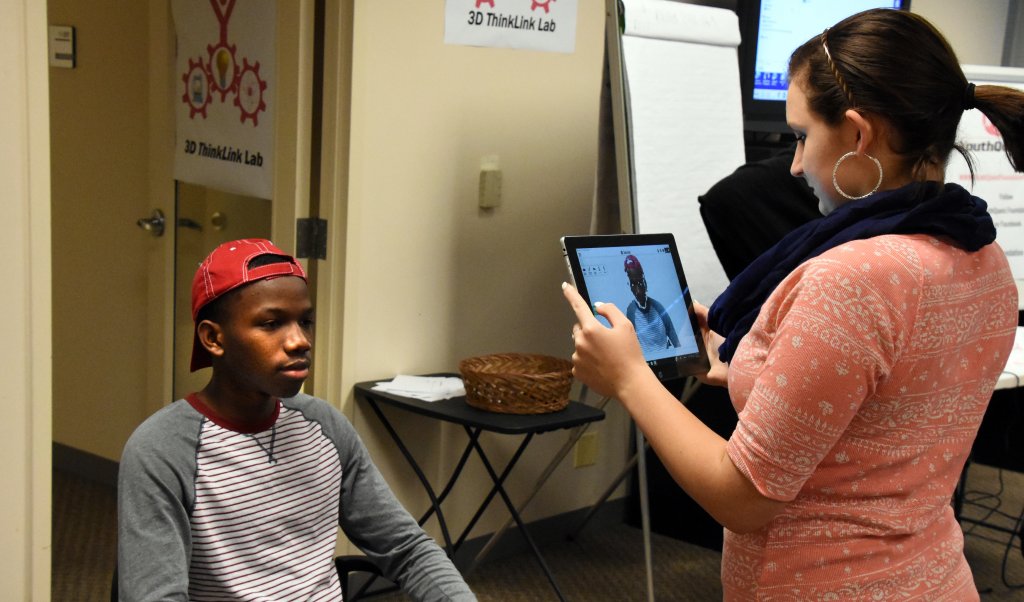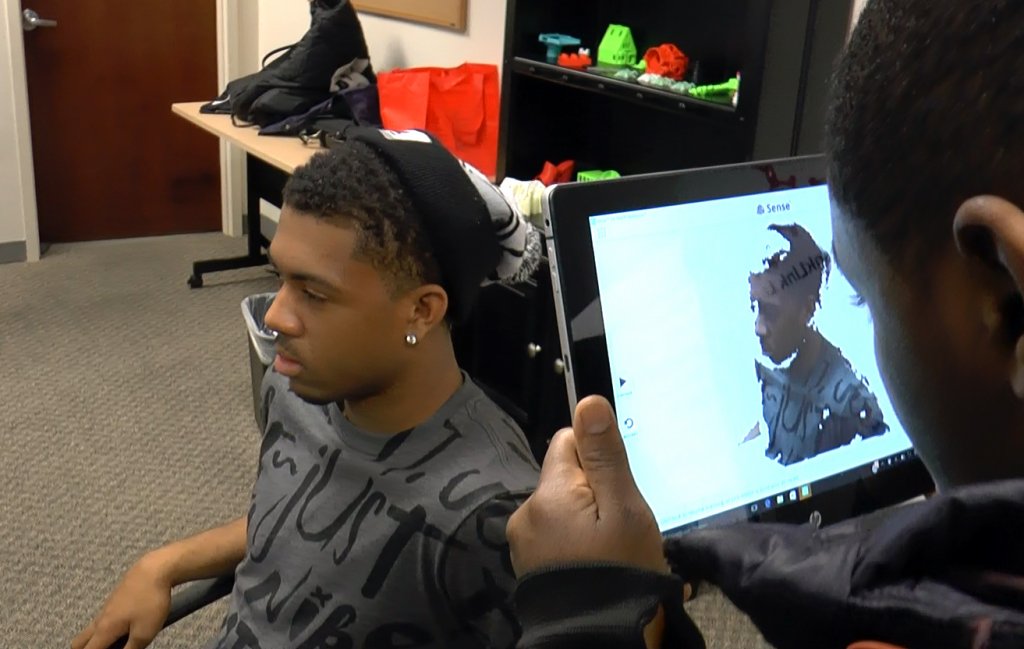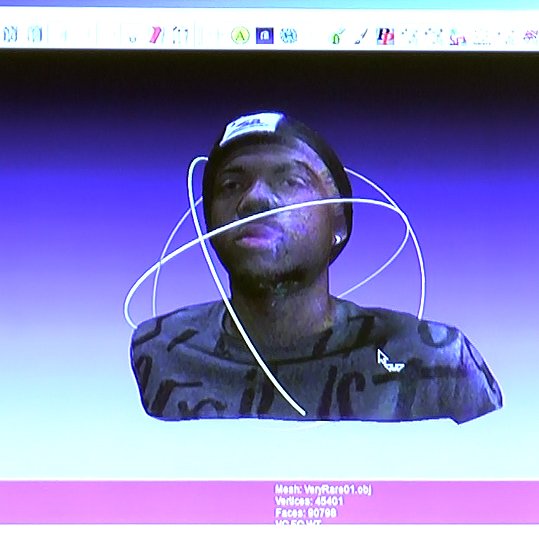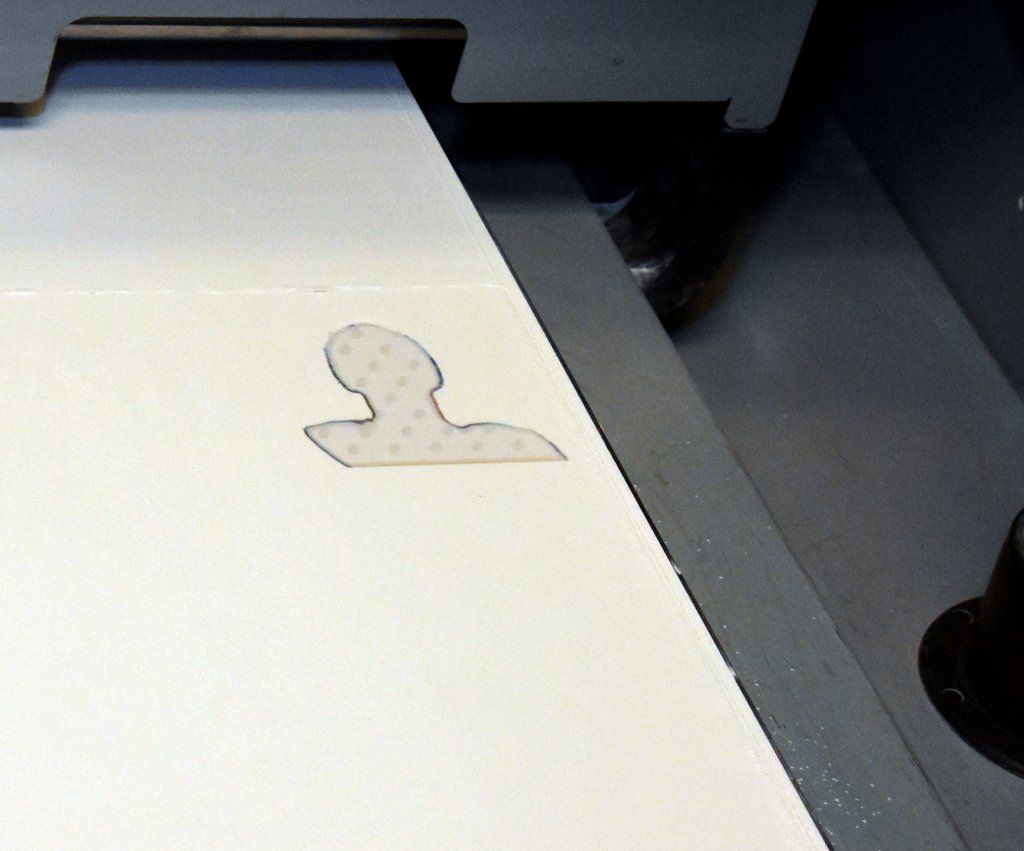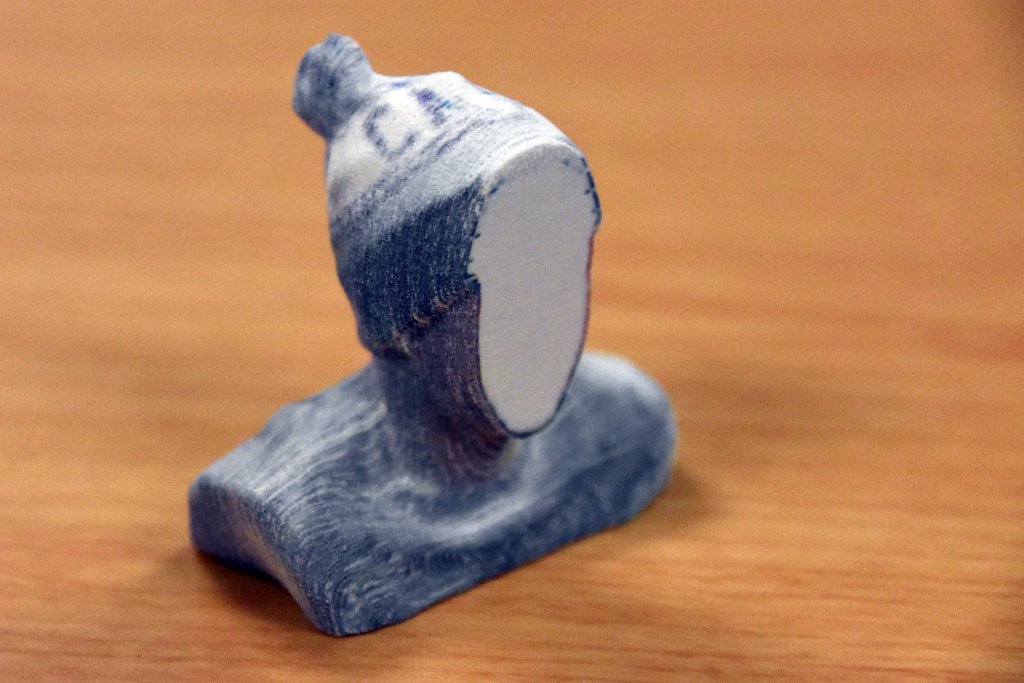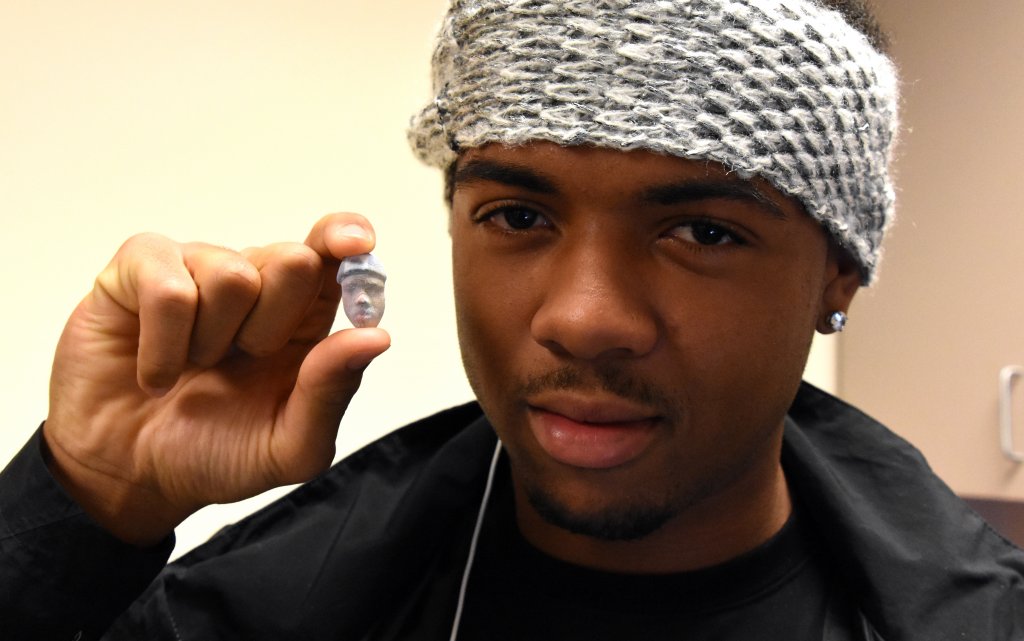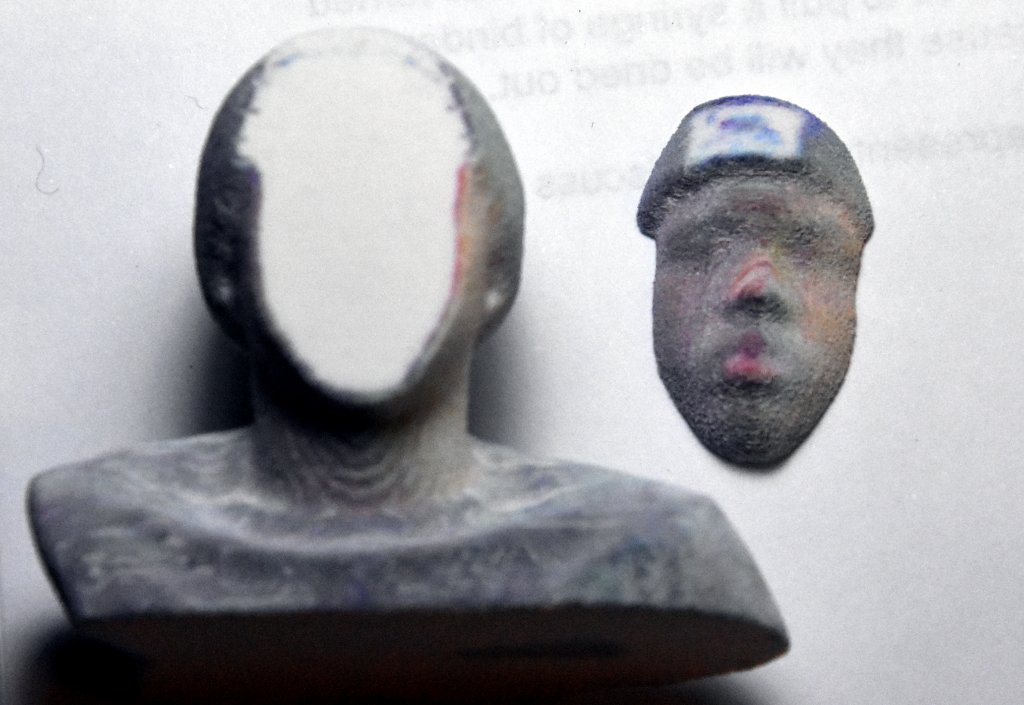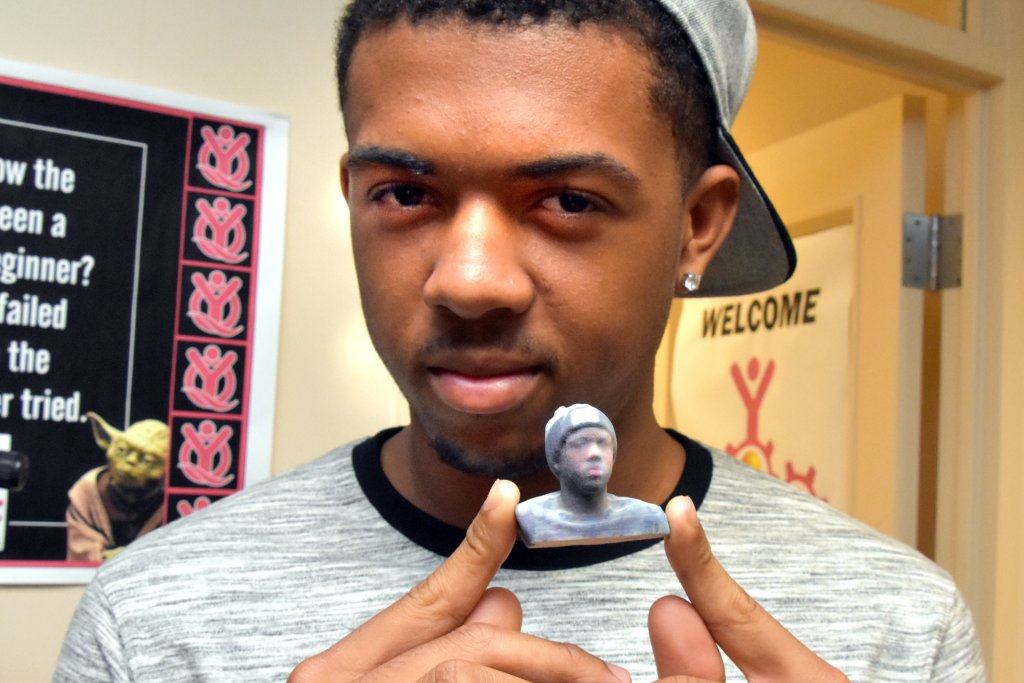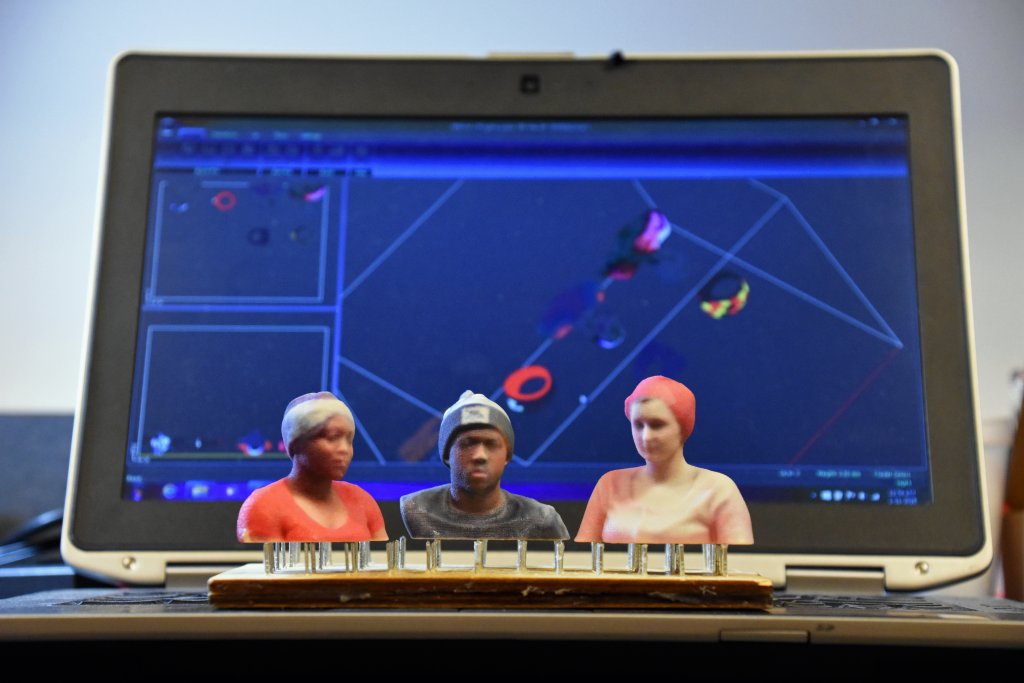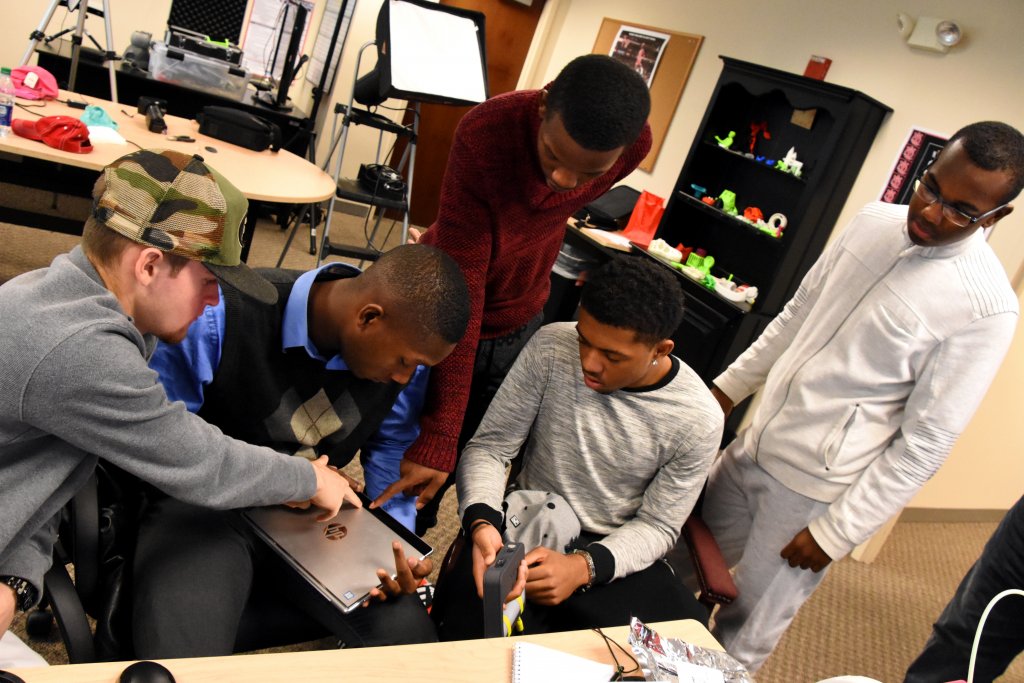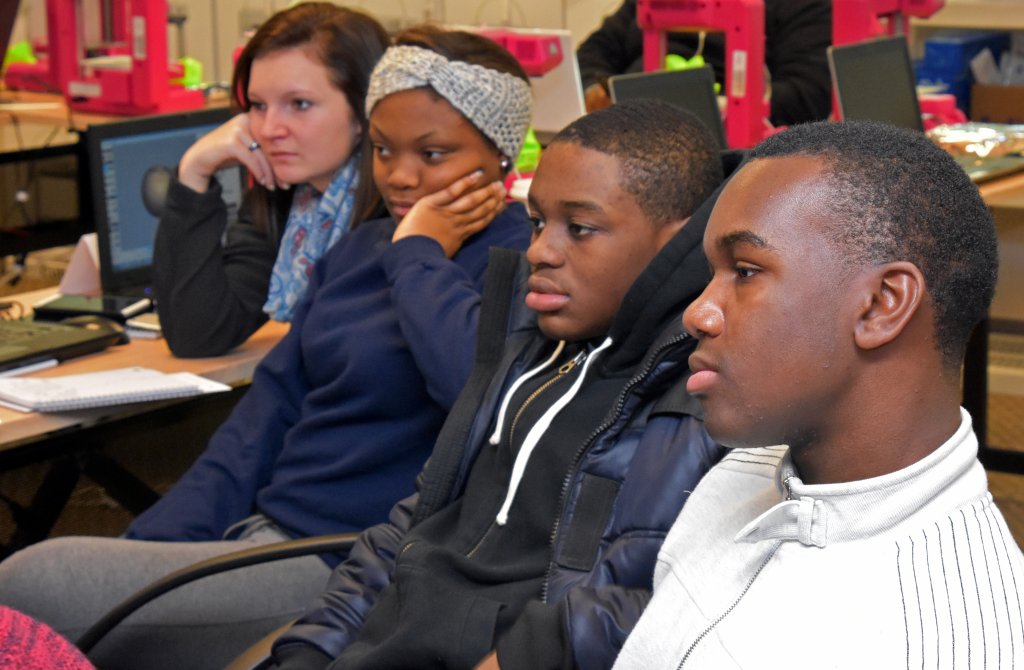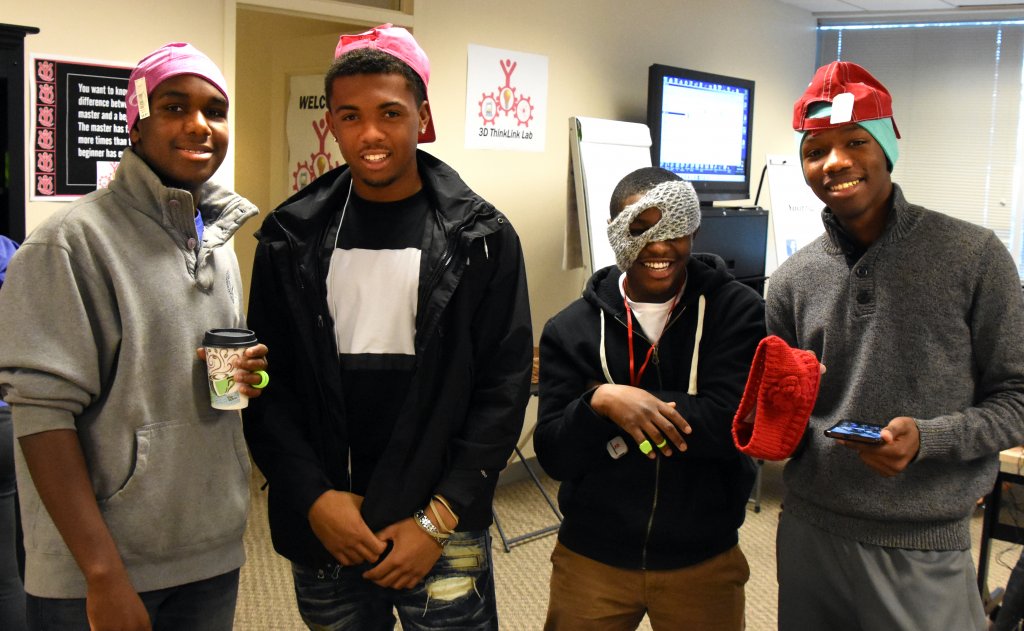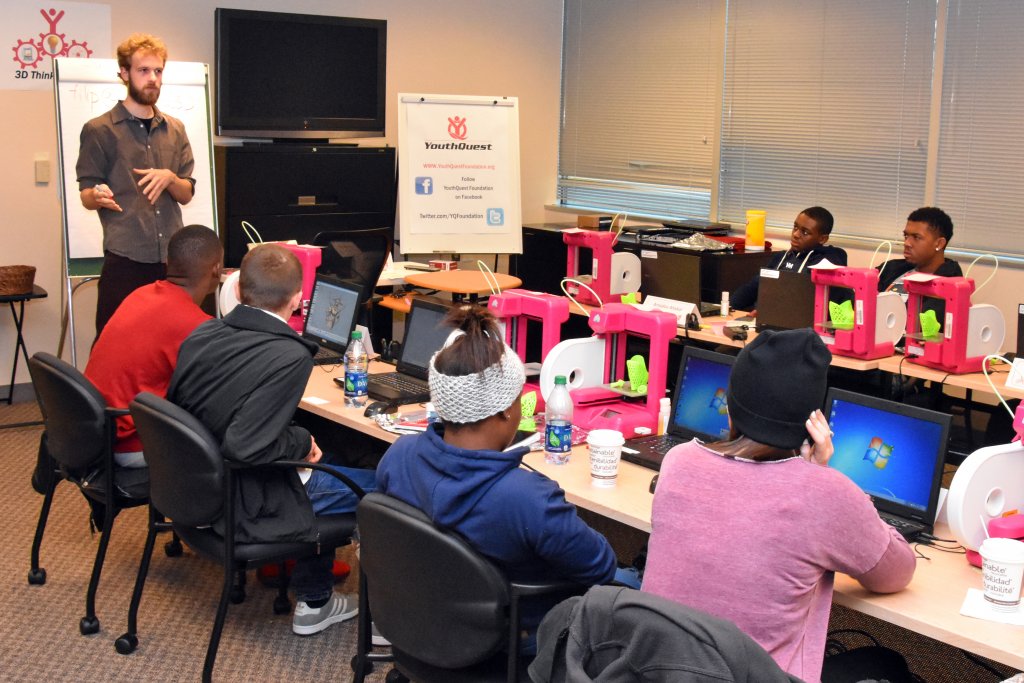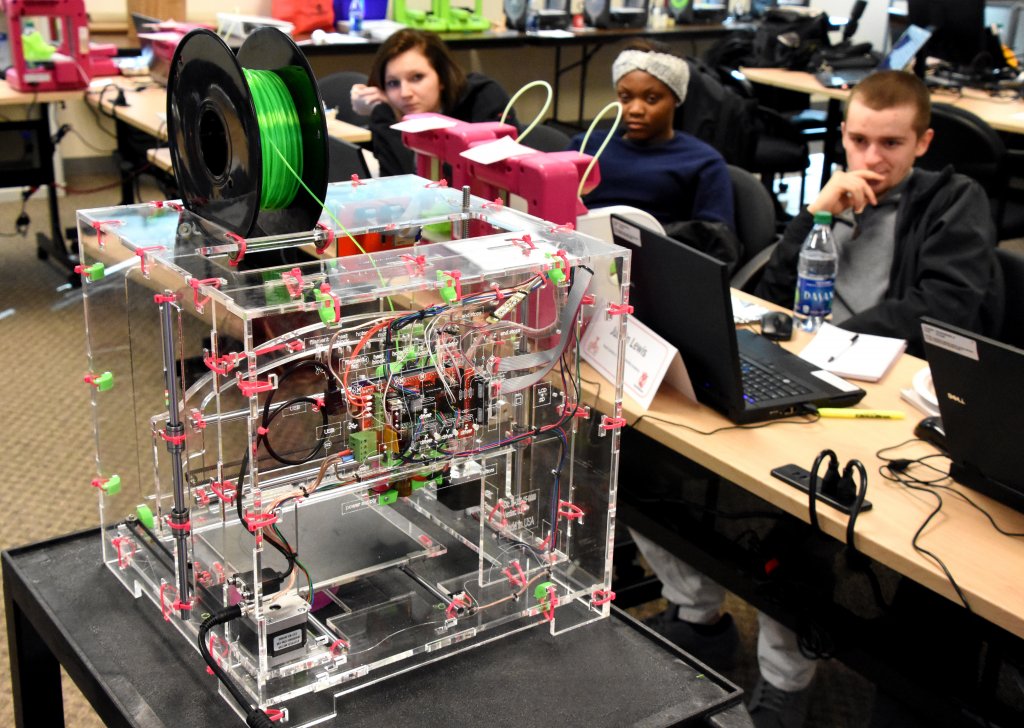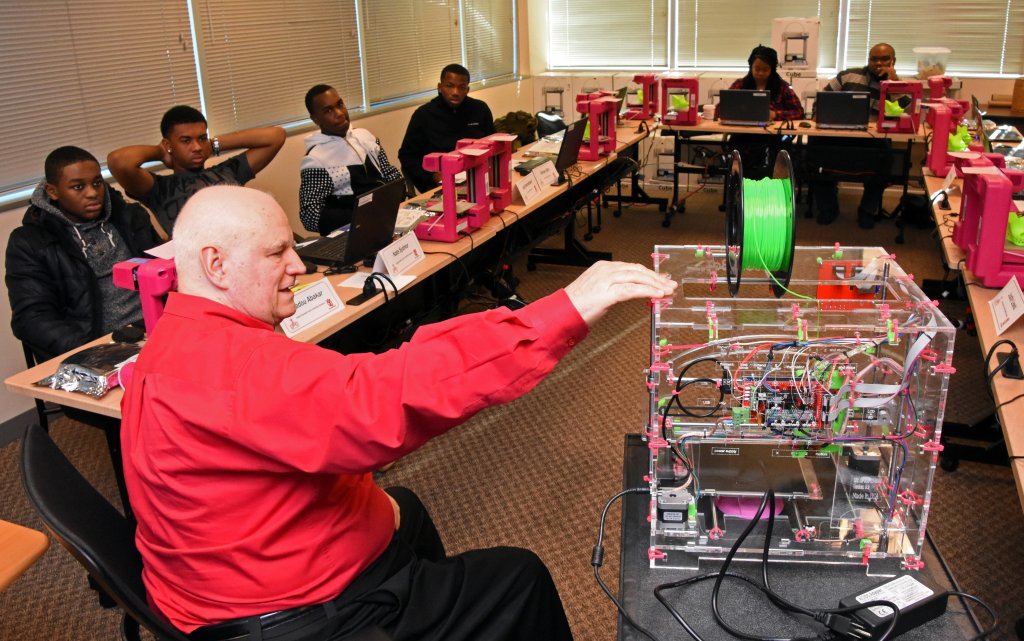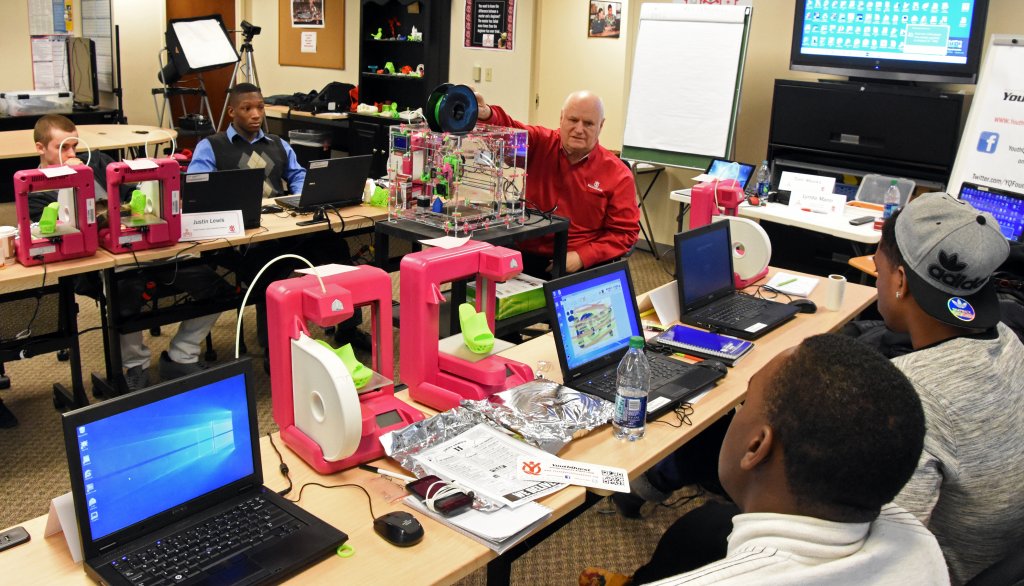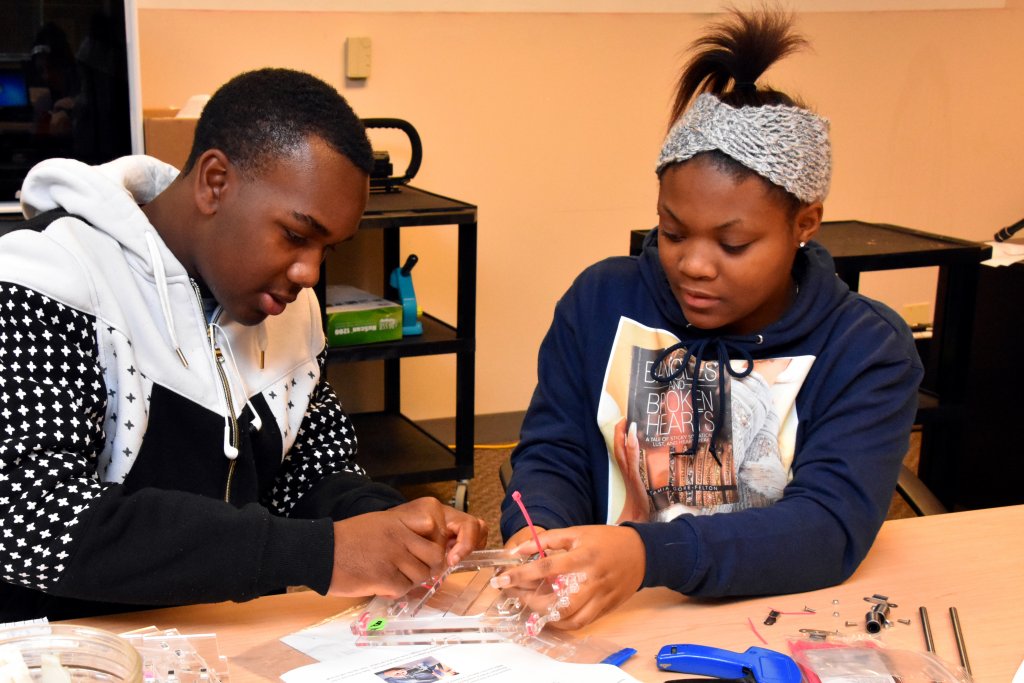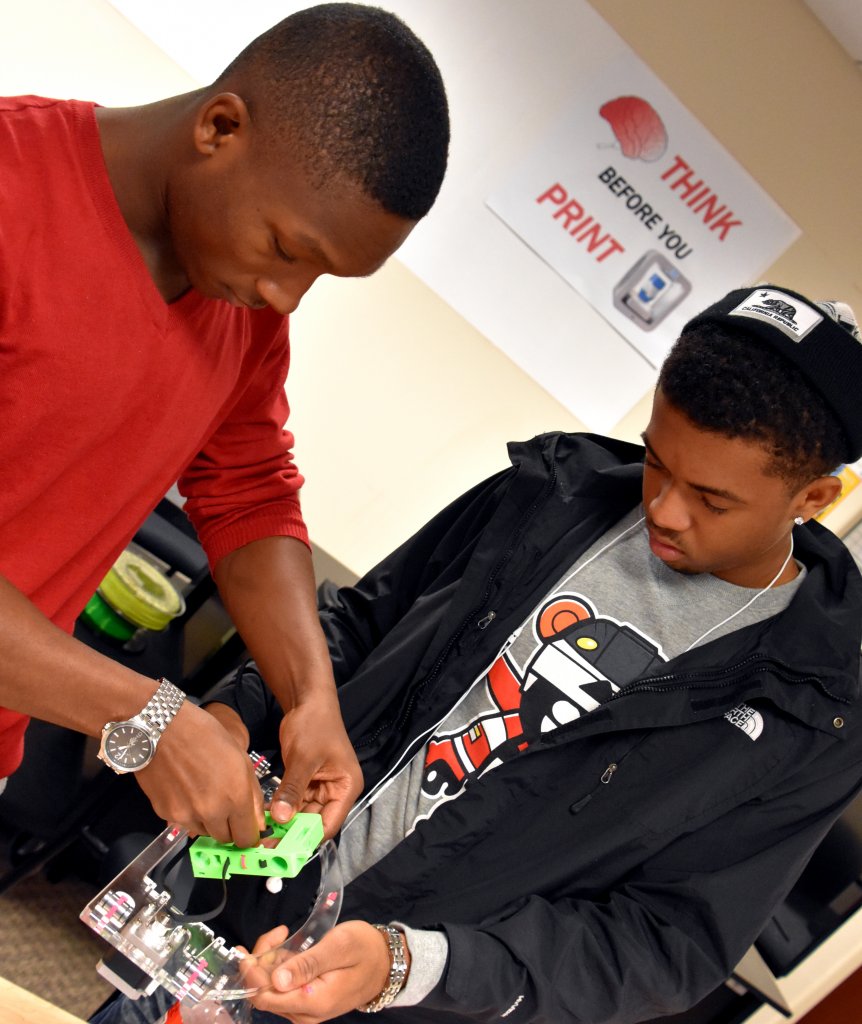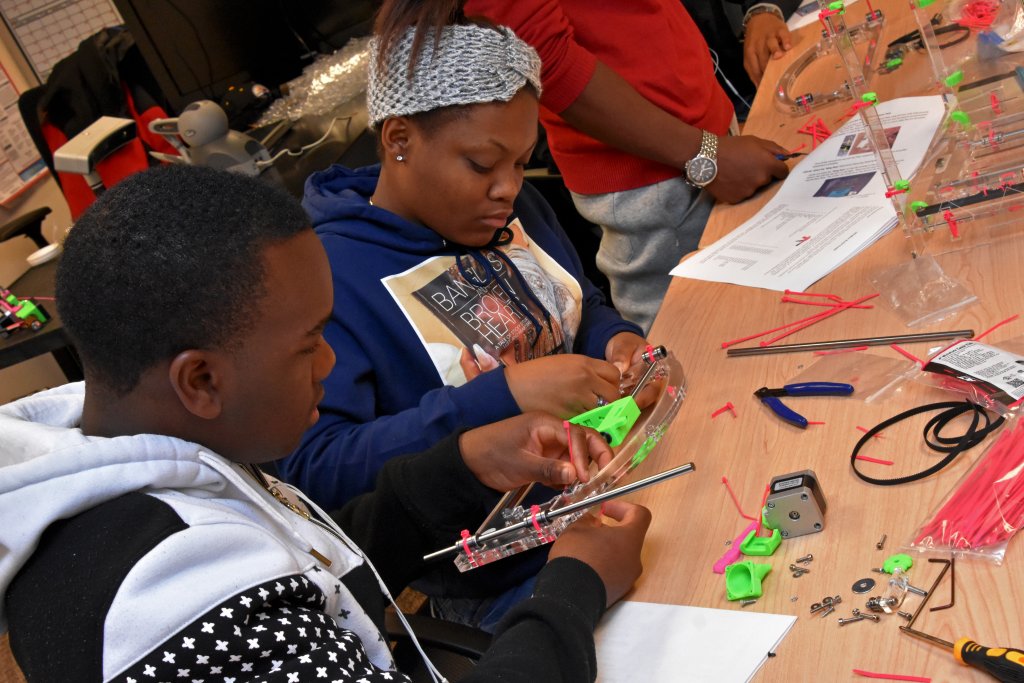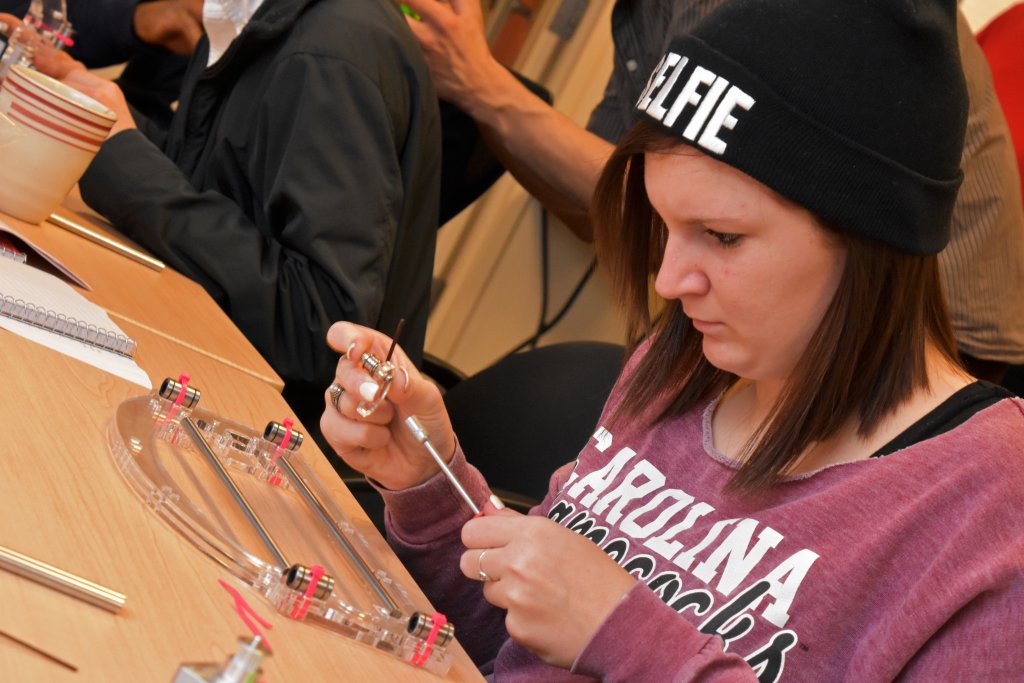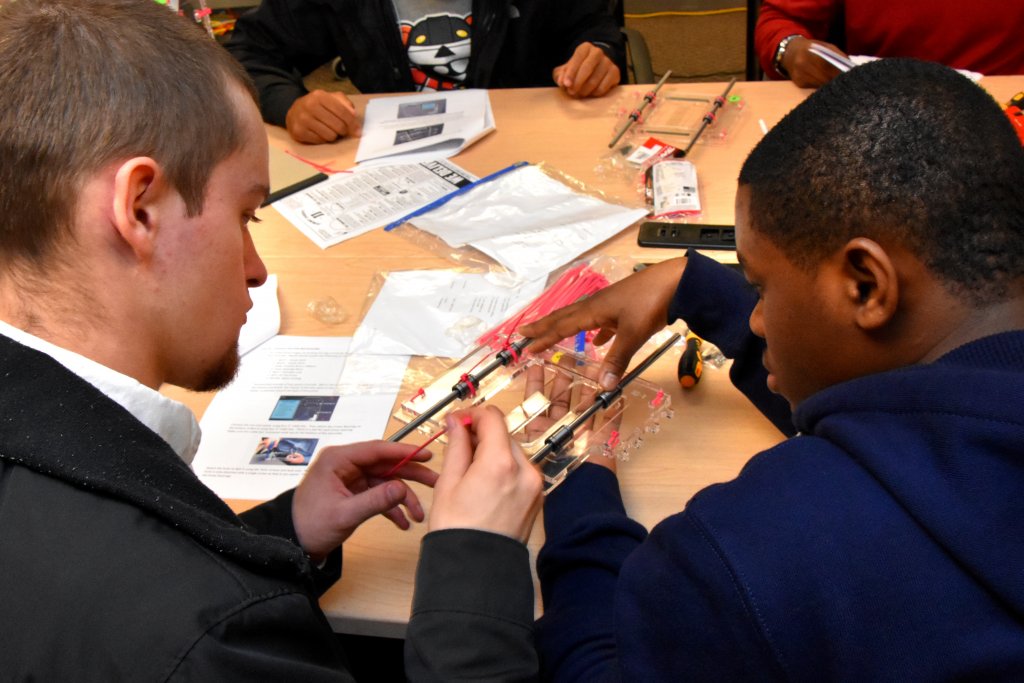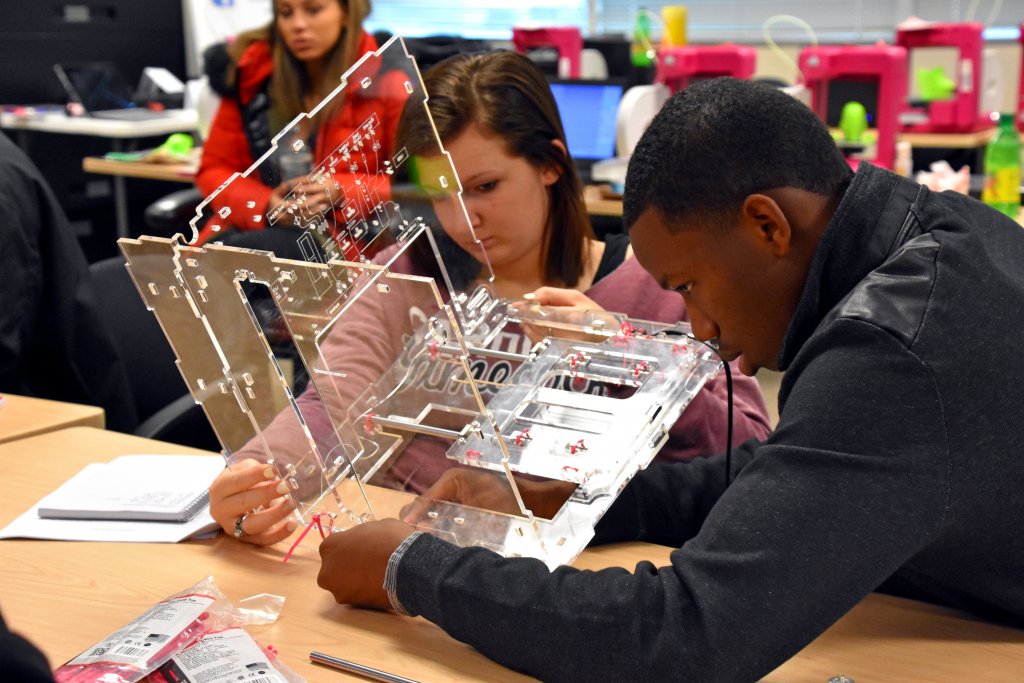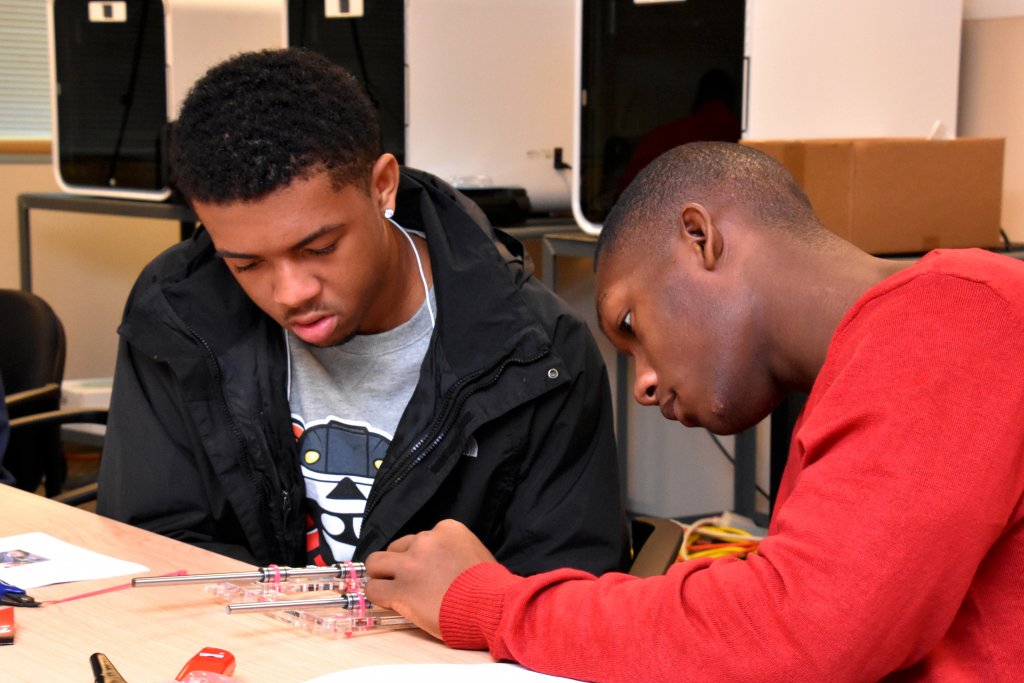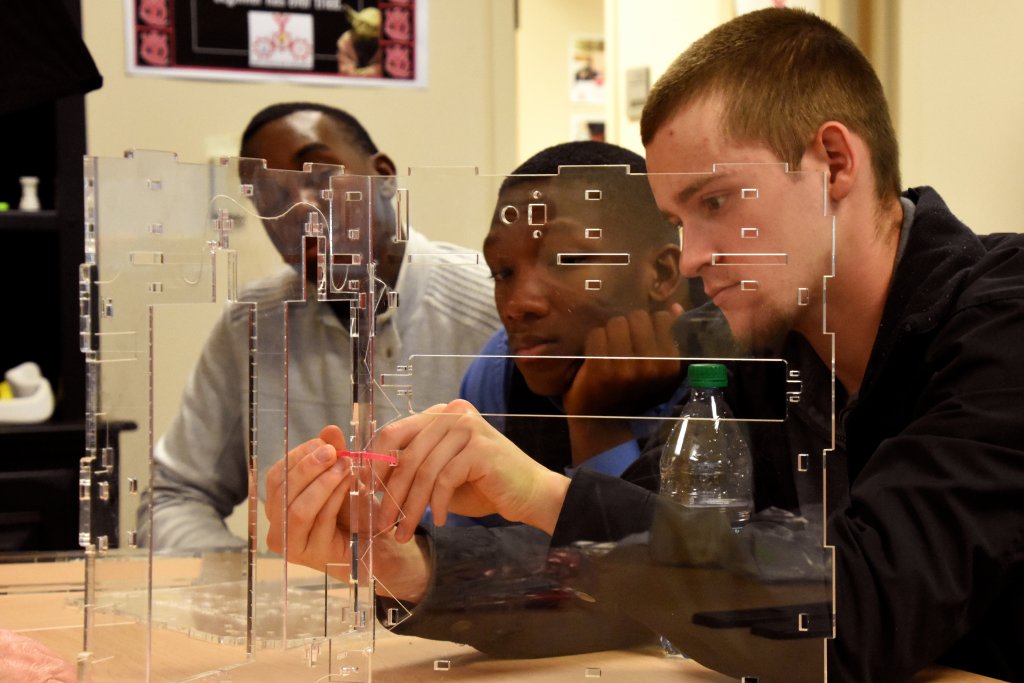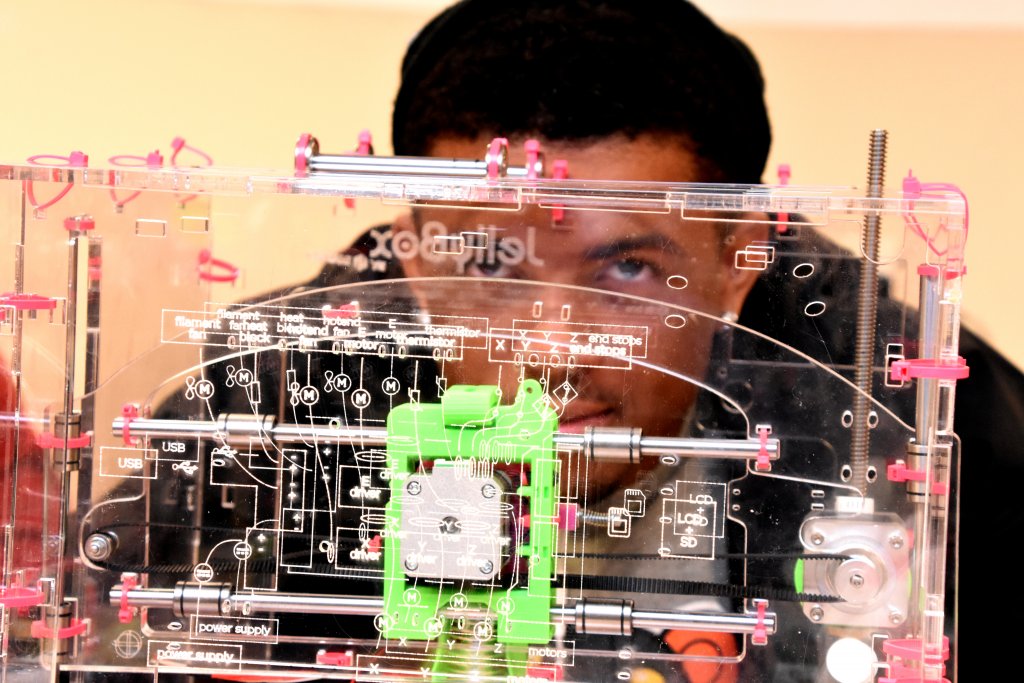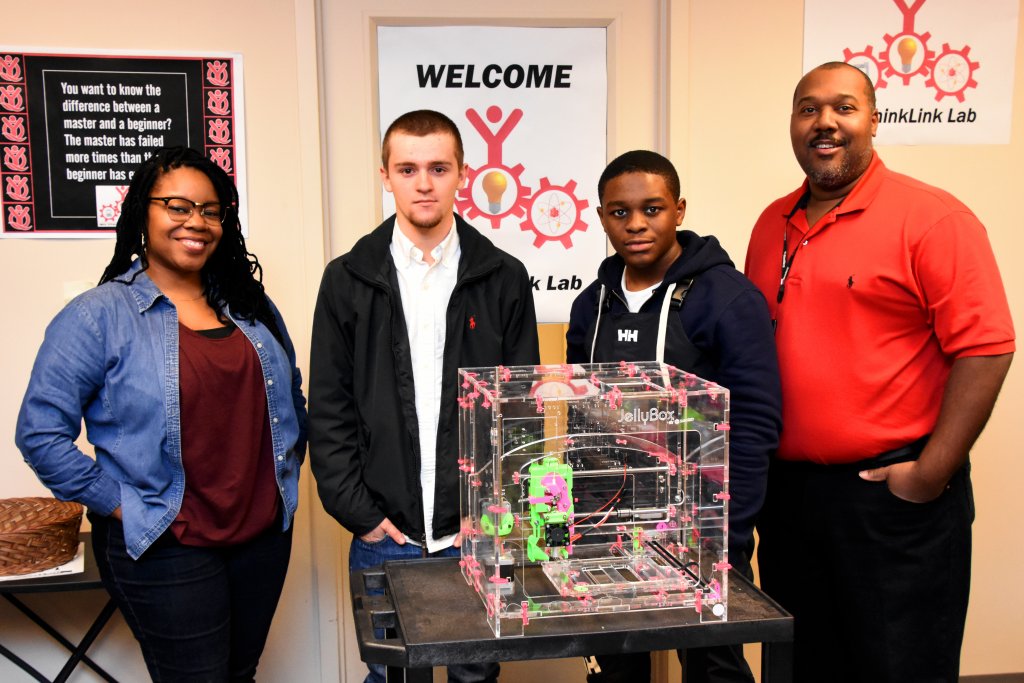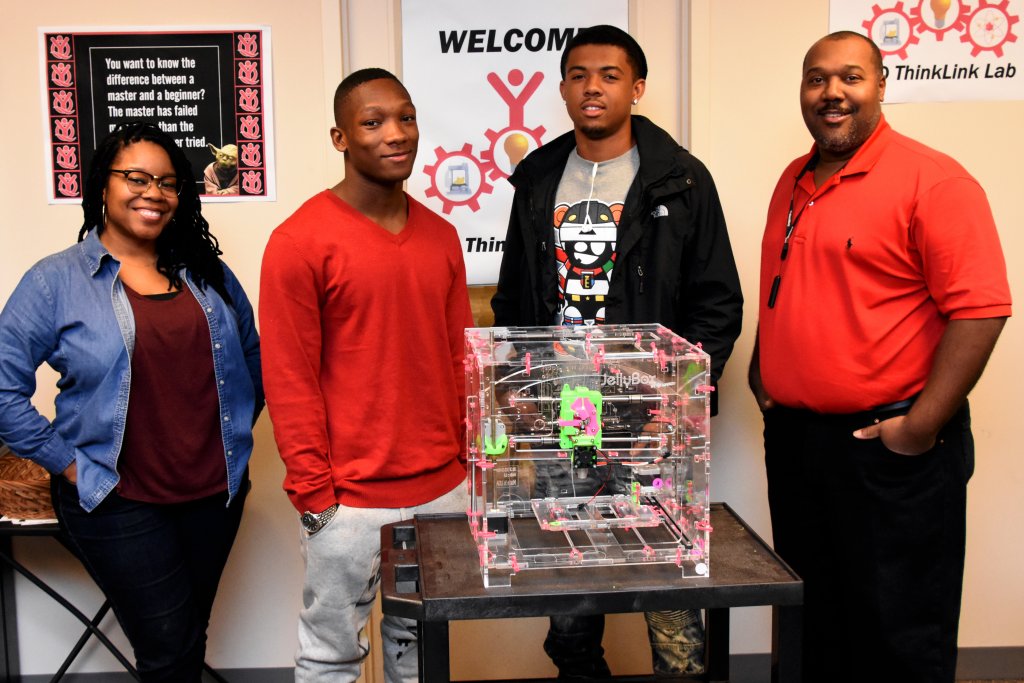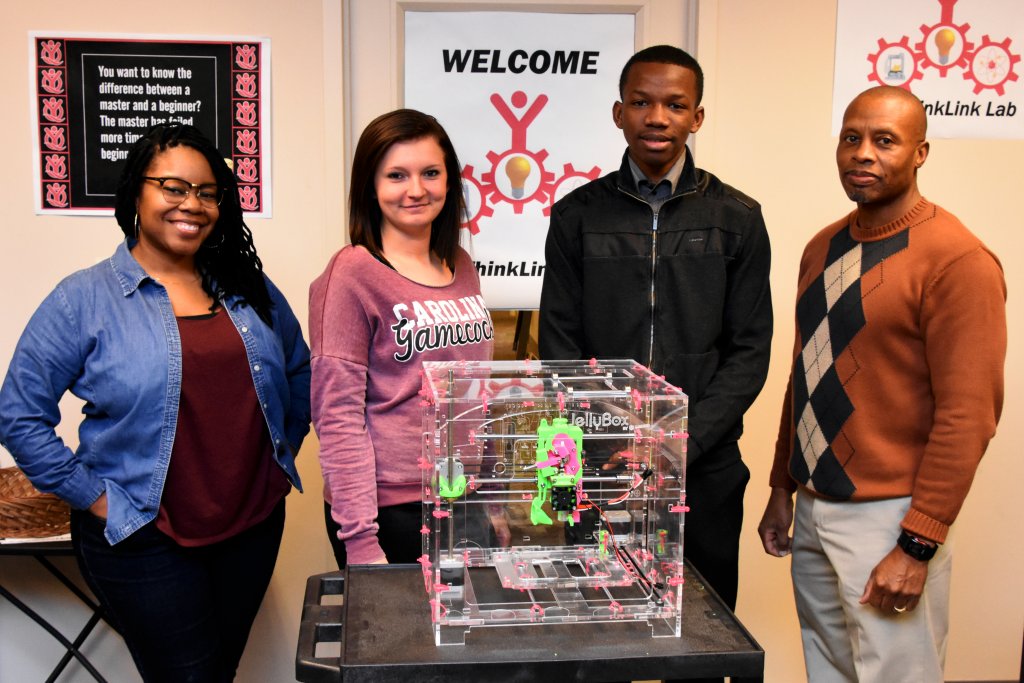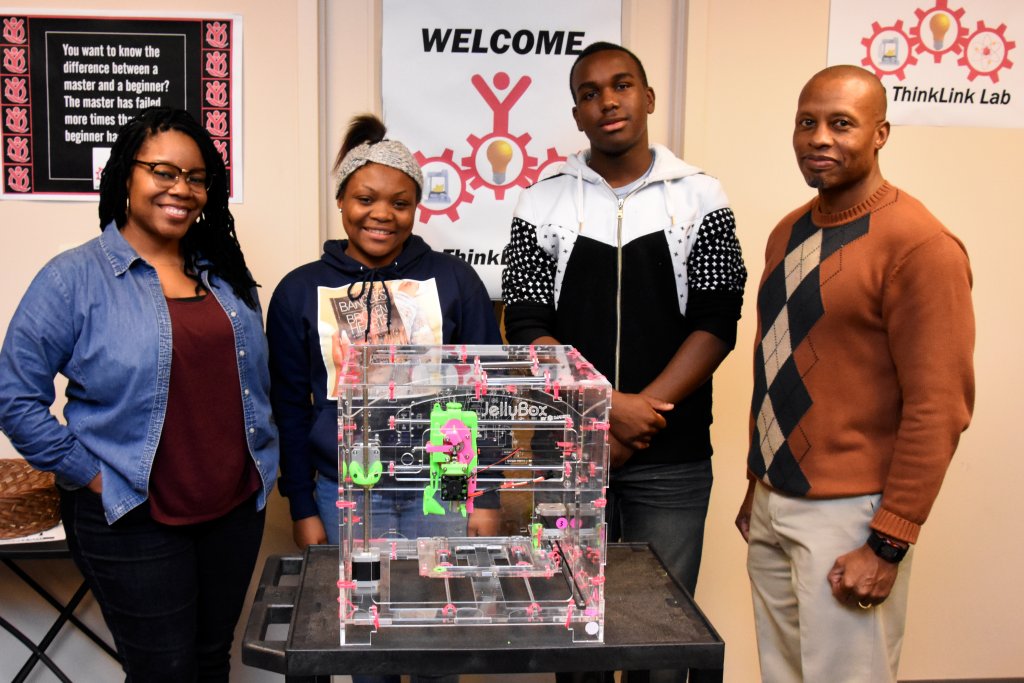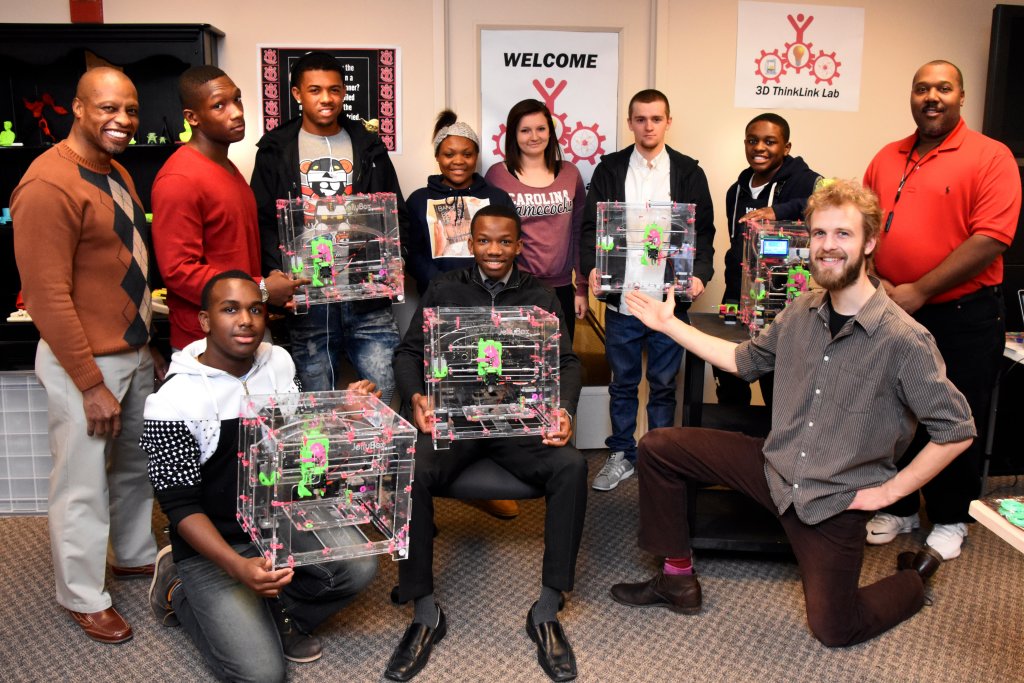The YouthQuest Foundation reached a milestone in serving at-risk youth as 2016 came to an end.
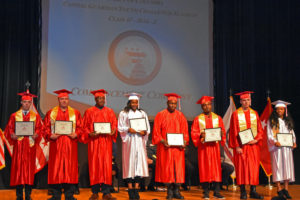
“With December’s graduations in Maryland, South Carolina and Washington, DC, 200 Youth ChalleNGe Academy Cadets now have completed our 3D ThinkLink training,” said YouthQuest Co-Founder and President, Lynda Mann. “It’s been a joy to watch this project grow during the past four years.”
The 3D ThinkLink Initiative helps students develop critical thinking and problem solving skills, creativity and confidence as they learn about 3D design and printing. The knowledge they gain gives our graduates an advantage in the tech-driven job market where demand for 3D design and printing skills is growing fast. Most important, they learn that failure is not final – a lesson that they’ll remember for the rest of their lives.
YouthQuest launched the project at Maryland’s Freestate ChalleNGe Academy in early 2013. Later that year, the District of Columbia’s Capital Guardian Youth ChalleNGe Academy joined, followed by South Carolina Youth ChalleNGe Academy in 2014.
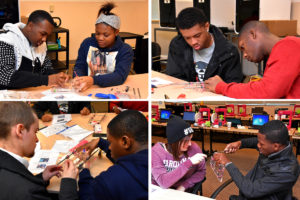
This year began with eight top graduates participating in a week of advanced training at our 3D ThinkLink Creativity Lab in Chantilly, Virginia. They did hands-on research evaluating 3D scanners and assembling JellyBox 3D printer kits.
Our training for all ChalleNGe Cadets includes a four-hour community service project and a full day of Vocational Orientation visits to businesses and schools where 3D design and printing is used. This year’s destinations included some old favorites such as 3D Systems and the University of Maryland’s Tissue Engineering and Biomaterials Lab, as well as new ones such as The Foundery and Under Armour’s Lighthouse innovation center in Baltimore.
“Being involved in 3D ThinkLink makes me think about the different opportunities I have,” said Freestate grad Josh Nembhard. “Being here gives you a better chance of going somewhere, for example, college or getting a job.”
Our new Youth Mentor Program offers graduates the opportunity to continue their 3D ThinkLInk experience by sharing what they’ve learned with their family, friends and neighbors. Beginning with Immersion Lab Week in January 2017, we will provide the equipment and training for our most qualified students to drive positive change in their communities by serving as Youth Mentors. Funding for the program launched this summer is already halfway to the $15,000 goal.
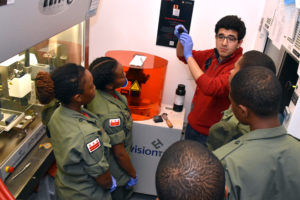
We also encourage our graduates to continue their education by awarding scholarships to those who write the best essays about how our training has affected them personally. Four students earned $500 scholarships in 2016; Trevon Ahl and Alycia Freeman from South Carolina Youth ChalleNGe Academy, and Brock Jasmann and Aunya’ Jones from Freestate ChalleNGe Academy.
“3D printing has helped guide me into making better decisions and gave me a new life skill along the way. It has really helped me understand my self-worth because now I know I can design my own future,” Aunya’ wrote in her award-winning essay. “I now see the bigger picture to my life’s problems and I’m not afraid to face them.”
PHILLIPS AND HORIZONS
Building on the success of our work with Youth ChalleNGe Academies, YouthQuest expanded the 3D ThinkLink Initiative to reach more youth programs in 2016
The PHILLIPS Programs for Children and Families began semester-long 3D ThinkLink classes for high school students on the autism spectrum as well as those with mental health issues at its school in Annandale, Virginia, in the spring and will launch classes at its Fairfax campus in early 2017.
“It’s made a big difference to our staff and to our students,” PHILLIPS Career Partners Director Lindsay Harris said. “These are students that have failed often in the classroom and they don’t always have the confidence that they can learn and be successful. This program really gives them that.”
According to the PHILLIPS Program Final Evaluation Report, the spring pilot program was a success, especially in the areas of student engagement, curriculum implementation and staff support. Lynda Mann credited the excellent work done by the PHILLIPS staff, especially teachers Samuel Son, Jim Field and Marcel Baynes.
“Their ability to recognize the innate creativity in these special-needs youth, and to use the 3D ThinkLink curriculum as a valuable way for the students to express themselves creatively while facilitating growth in critical thinking and problem solving, was brilliant,” she said.
3D ThinkLink also took root and started growing in Virginia’s Tidewater region this year. We trained teachers and provided the curriculum and materials for Horizons Hampton Roads to run 3D classes for sixth graders as part of its six-week summer enrichment program.
This fall, teacher Franklin Baker used what he learned during the summer to create a course for older students. Horizons’ High School Scholars successfully completed their 3D class in December.
A REWARDING YEAR

2016 was the fifth straight year YouthQuest sponsored the Step Up Loudoun Youth Competition. The event organized by Louduon Youth, Inc. challenges middle school and high school students to identify problems in Loudoun County, Virginia, and create solutions. Local business and civic leaders judge the projects and YouthQuest donates most of the prize money.
This year’s Step Up contest drew more entries than ever and we hope for an even larger field of competitors in 2017.
This year’s many accomplishments would not be possible without YouthQuest’s generous supporters.

The annual golf tournament was our most successful fundraiser. There were more sponsors than ever and more than 100 players took part in the event on August 8 at Trump National Golf Club’s Championship Course in Potomac Falls, Virginia, recently named one of Golf Digest’s best new private courses.
At the annual VIP Reception a few days before the tournament, we recognized AOC’s Valerie Hightower as our 2016 Volunteer of the Year. The 2016 Community Partner Award went to Duncan-Parnell, Inc. The Boys & Girls Clubs of Greater Washington received the 2016 Strategic Partner Award.
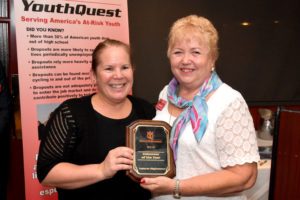
Donors stepped up during the golf tournament and VIP Reception to get the ball rolling on funding the Youth Mentor Program.
Our participation for the first time in #GivingTuesday, a global celebration of charity on the Tuesday after Thanksgiving, also gave our year-end fundraising a boost.
Contributions are welcome at any time of year, of course. Please click here or contact Operations Manager Juan Louro, who joined us on the first workday of 2016, at juan.louro@youthquestfoundation.org or 703-234-6300.
The Year in Pictures
